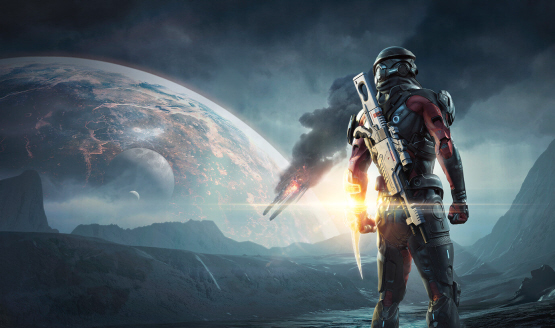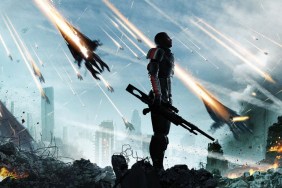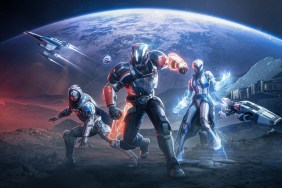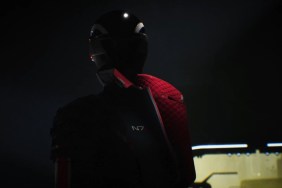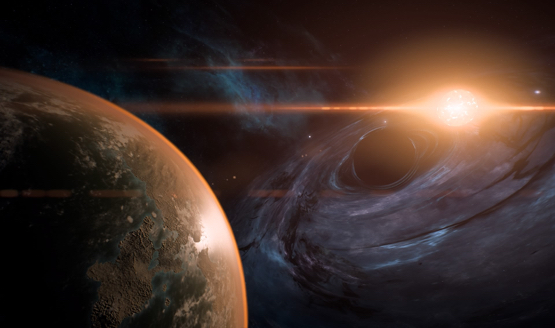
After the credits rolled at the end of Mass Effect 3, no one expected the franchise to really return outside of a port to the current generation of consoles. EA’s announcement of Mass Effect Andromeda at E3 2015 both surprised and elated fans. We had a long time to wait, but oh, it would be worth it. Mass Effect addicts love the franchise so much, we don’t care how long we have to wait for a new installment. We will happily wait a few years for a polished experience filled with a space opera and those BioWare character development and interactions that made the original trilogy so remarkable. It’s unfortunate that Andromeda stumbles more than it sprints in most cases.
Ineffective Storyline
The Andromeda Initiative is a plan the Council cooked up to send tens of thousands of eager participants from most species (human, asari, turian, krogran, and salarian) to the Andromeda galaxy to settle. The Andromeda galaxy is two million light years away, effectively making this a one way trip. They leave in the year 2185, the year Mass Effect 2 began. There are no Mass Relays in Andromeda, which seems to be just fine as everyone has ships that fly faster than light (FTL). I’m not sure why this technology existed in 2185 but was only given to the Initiative; if they had shared it then perhaps they could have deactivated the Mass Relays and stopped the Reapers from coming at all.
But I’m digressing; the tale of Andromeda takes place 634 years after the start of the second Mass Effect game where these species from the Milky Way opt to settle in a brand new galaxy. Your mission as one of the Ryder twins is to pick up the Pathfinder role your father left behind and help all of these colonists settle in this strange new world. All they know about the galaxy is that there are potentially “seven golden worlds” they could possibly inhabit, all based upon data over 600 years ago at a two-million light year delay. Things have changed, and not for the better. The Heleus cluster they chose for settlement is plagued with dark energy webbings around the systems and very hostile aliens who want to shoot first and not ask any questions. If that wasn’t bad enough, all of the planets in the cluster are inhospitable, contrary to the outdated data they gathered 600 years ago.
Of course things weren’t going to go smoothly, because it would be another Sim game without some conflict. It would be nice, though, if the conflict wasn’t so similar to one of another space opera: Halo. The planets are not viable due to ancient yet advanced alien technology left behind in Andromeda. There are vaults on each planet with the Remnant tech, and by unlocking each vault, Ryder can stop whatever atmospheric calamity is causing the un-viability. Each vault and site of this tech is also guarded by machines made from the same technology. The hostile aliens on a Milky Way murder spree are after this tech. Halo fans are probably already rolling their eyes. Those who have never played Halo may find this to be a fresh idea, but the rest of us will not be impressed. I like Halo, but I’ve already played Halo; I don’t need Mass Effect: Halo.
The plot only unravels from there as you uncover what the hostile aliens (kett) are really up to. Whether you have Halo in your repertoire or not, you will feel as though you have done this before and in better games, and it’s not only because this is yet another classic BioWare “Chosen One” story.
Even with BioWare’s classic and rather overused formula, it’s the characters that particularly shine in their games. If you talked to me in the first couple of days of playing Andromeda, I would have said that they were flat and very boring, almost very Dragon Age 2-esque. At about 20 hours in, when the loyalty missions start to open for your crew members, the characters finally start to round out. It’s also at this point that more planets open up for exploration and players can get a side questing groove on. At over 30 hours, I realized that I was having a lot of fun with the game if I only touched on the main story when I had to. There is easily hundreds of hours of exploration at your fingertips, and since the point of the Andromeda Initiative is to settle Andromeda, you can make this your real story instead of the given plot-line. Considering how cheesy the dialogue is and how lazy the writing is, this really is for the best.
A Mass of New Game Mechanics
Andromeda builds upon the RPG mechanics from past games, but not all are an improvement. The combat itself has greatly improved, and players have more freedom in battle and their skills than they’ve ever had before. Thanks to being a Pathfinder, meaning Ryder has an AI implant in their brains (yes, another similarity to Halo), players can switch the profile of Ryder at any time. The profiles are nothing new, we’ve had them since the beginning — Adept, Engineer, Explorer, Infiltrator, Sentinel, Soldier, Vanguard — but once you’ve chosen something, you’re stuck with that throughout the game. If you tried using biotics (sci-fi magic) and found you hated it, your only choice was to roll a new character. As a Pathfinder, you can learn whichever skills all across the three sectors (tech, biotics, combat) you wish. How many skills you purchase in those trees determines which profiles you unlock, and the profiles grant additional bonuses to using those particular skills. Players can then set four favorite groups consisting of one profile and three skills each to switch between whenever the situation needs.
For example, if you’re fighting Remnant, using tech powers will work the best, but when fighting the kett, you may want some biotic action, or maybe you want that extra punch in your skills that only a soldier profile can offer.
Combat has a few more tweaks than the just the profile system. Ryder now automatically takes cover behind crates and walls when her weapon is drawn. I don’t need to paint a picture of how helpful this is while running with low health. Characters also have the ability to jump high and hover with jump packs as well as dash. Combat is faster, there are more strategic options to attacks, and there’s a new platforming element to both combat and exploration, not to mention how much a well-timed jump or dash can literally save your ass.
The Mako has returned in the form of the Nomad, and this one is actually fun to drive. It’s not invincible, but you’ll never have to worry about flipping it into lava. I’m a self-professed terrible driver in games, and I haven’t crashed the Nomad yet. I’ve even tried. A few times I sailed it off a cliff or got it blown up because I really wanted to run over these kett shooting at me. Considering how many times I flipped a Mako into a careening death or couldn’t get the darn thing to climb this one stupid cliff, I’m more than fine killing the Nomad with my own arrogance. You can also upgrade the Nomad to improve the shocks, boost, or shielding to really run over kett and outlaws in style.
The character interactions have changed up a bit as well. The dialogue choices are no longer neutral, paragon, or renegade, but far more grey. Players can have four different types of responses with characters: professional, casual, logical, or emotional. Playing with these response types shapes Ryder’s personality a bit more than simply choosing all blue or all red responses. The choices Ryder makes don’t fall under either of these four types either, making it not entirely obvious how your choices will reflect upon the other NPCs. Thus, leading to variations on the overall experience and endings.
Massive Technical Meltdowns
Several .gifs, videos, and images are circulating showing off Mass Effect Andromeda at its visual worst, and I’m sad to say that none of them are exaggerated. The facial animations are not as awful as they were in Assassin’s Creed Unity, but they’re fairly bad. Whenever Sara smiles, I cringe. When she walks downstairs, I wonder if the animators know how humans move. The amount of texture pop-in makes the original Mass Effect look graphically brilliant. The single-player suffers badly from frame-rate drops, especially during heavy combat sequences and driving the Nomad. I’ve been killed too many times because the lag dragged Ryder into painfully slow movement or locked her in place while everyone else shoots at leisure. Occasionally Ryder is locked in place so badly, all I can do is restart the game and lose any unsaved progress. Since you can’t manually save during a mission and the auto-saving checkpoints are far and few between, just imagine how delightful this was.
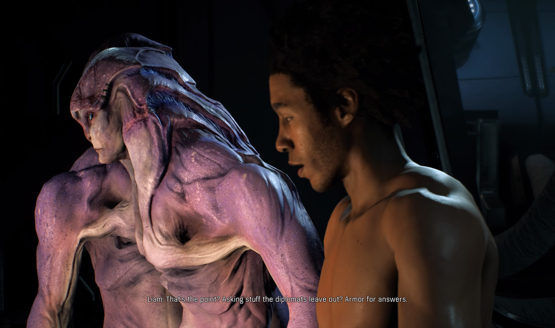
Not even the cutscenes were safe. In the image above, Jaal suddenly became a conjoined twin in the middle of the cutscene. He had one frozen version of himself and he moved around within his second image. It was horrifying. The fact that he was shirtless made it weirder. Several times, other cutscenes were lacking a character entirely. The camera would turn to a missing character, other characters would address that person, but no answer, oral or subtitle, was ever given. I had to reload auto-saves just so I could understand what in the world was going on.
Effective Use of Multiplayer
Yet somehow, I didn’t experience an ounce of lag in the multiplayer. The multiplayer was a big surprise in ME3, and BioWare decided that since it isn’t broke, why fix it. The multiplayer portion once again pits teams of players against AI hordes in various missions. The difficulty of the missions changes the strength of the enemies, the number of enemies, and the number of waves the team has to complete before extraction.
Once again, this portion of the game fits in with the overall story of the single-player. As the Initiative settles new worlds, Strike Teams can be sent in to clear out kett and raiders, gather intel, and various other assignments to help out the Pathfinder behind the scenes. Some of these missions Ryder can dole out to the Strike Teams, and others players can take on for themselves to complete. None of the multiplayer is required to complete the game or get a “best” ending either, but participating in Strike Team missions does reap other rewards for the single-player, such as crafting materials and blueprints.
Be prepared in the multiplayer for once again an extensive use of the Rube Goldberg machine. It’s not half as abusive as the single-player missions can be (if I listed out everything I had to do to unlock one door in a story mission, you wouldn’t believe me), but it will induce an eye roll or two.
BioWare obviously had some lofty goals when building Andromeda. They wanted to go above and beyond what they created with the original trilogy and create an open world experience set in the Mass Effect universe that fans would love to play around in. Also, since it is Mass Effect, they knew they had to write an epic space story to fit into the open world. Perhaps they piled on a bit too much to try to fit it all and the kitchen sink into one well-executed package. Perhaps they tried too hard to please all people.
With the vast love of the Mass Effect series, Andromeda was never going to make people 100% happy, the same way the ME3 ending didn’t make people happy. The BioWare team put so many great things in place, but the main story, the characters, and most of the writing keep the game from being great. Sadly, technical mess keeps it from being good.
Mass Effect: Andromeda review code provided by publisher. For more information on scoring please see our Review Policy here.
-
Switching profiles in combat
-
Exploration
-
Multiplayer
-
Humorous references
-
Lazy writing
-
Overdone plot
-
Technical messes
-
Bad character pacing
-
Rube Goldberg overkill
Mass Effect Andromeda info dump
-
Mass Effect Andromeda - EYNTK
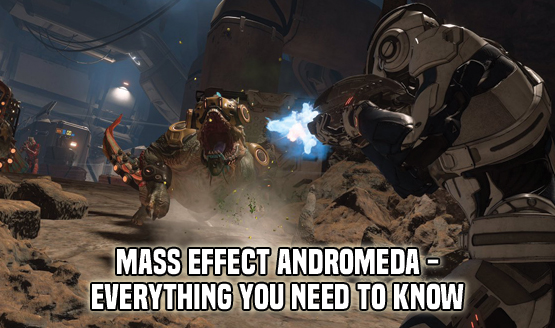
Mass Effect Andromeda is almost upon us! Let's take a deep dive into BioWare's spacefaring adventure to pinpoint Everything You Need to Know.
-
What is Mass Effect Andromeda?
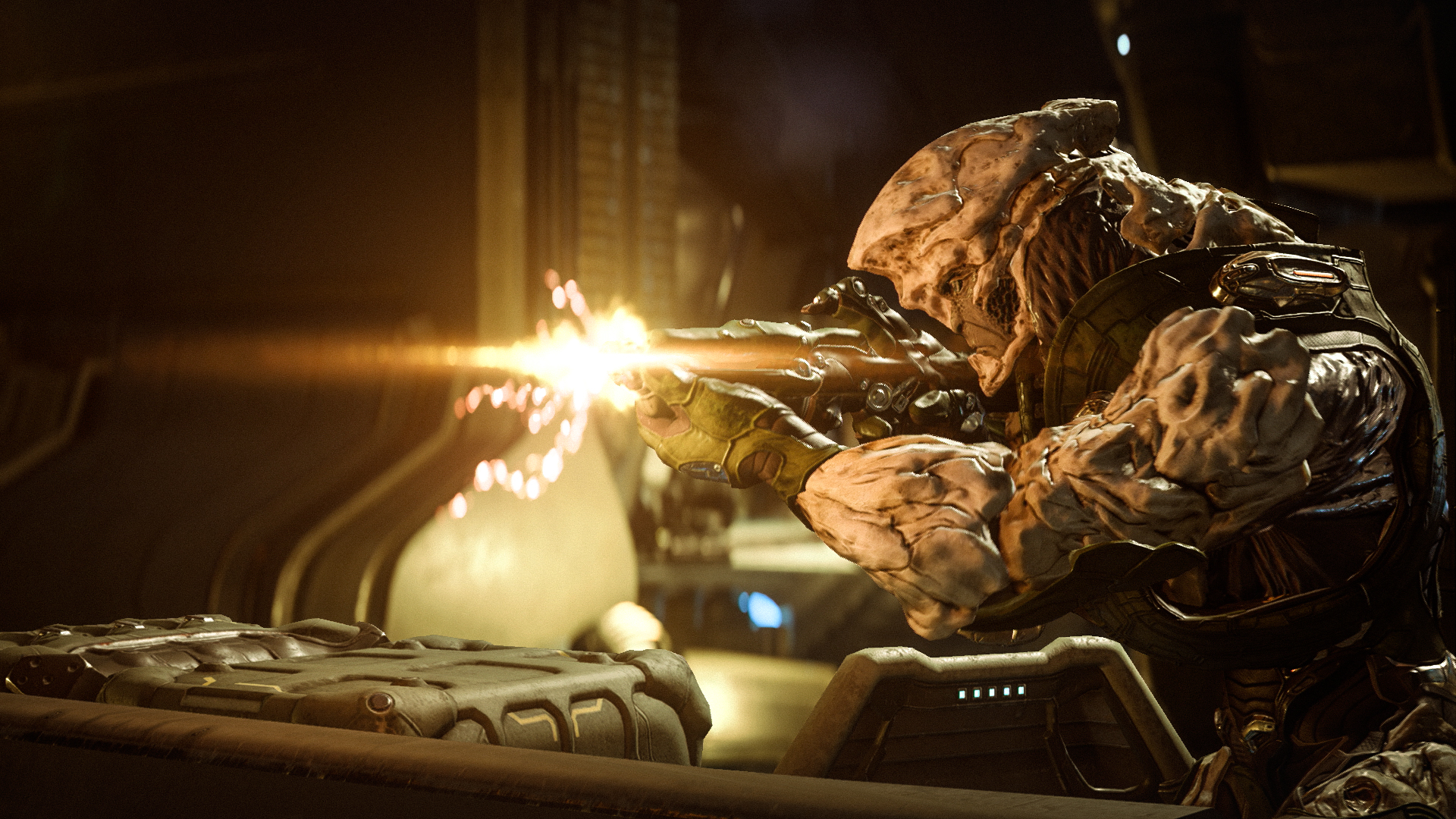
It’s the latest entry in the Mass Effect series that heralds a dramatic shift for BioWare’s spacefaring series — new characters, new aliens, and a whole new galaxy to explore. We are, of course, referring to Andromeda, our galactic neighbour that plays host to most, if not all of the game’s story. Speaking of which…
-
What’s the Story?
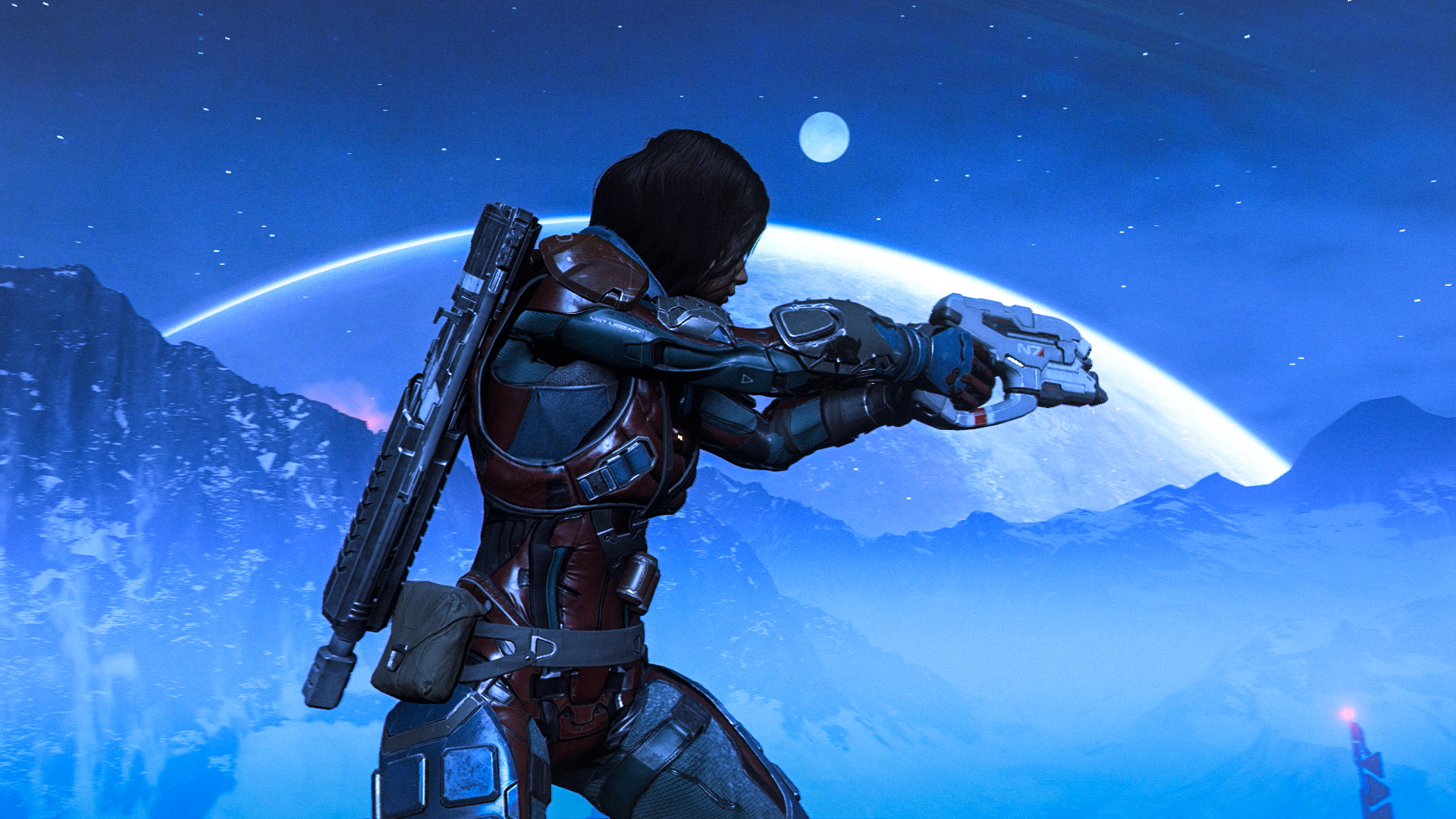
Set some 600 years after the events of Mass Effect 3, Andromeda opens at a time when humanity and their neighbouring alien races have plot course for the Andromeda Galaxy in the hopes of locating a new home. Once you choose between Scott or Sara Ryder, you'll awaken in the year 2819 upon an ark led by their Pathfinder father, Alec Ryder. Which brings us to...
-
The Andromeda Initiative
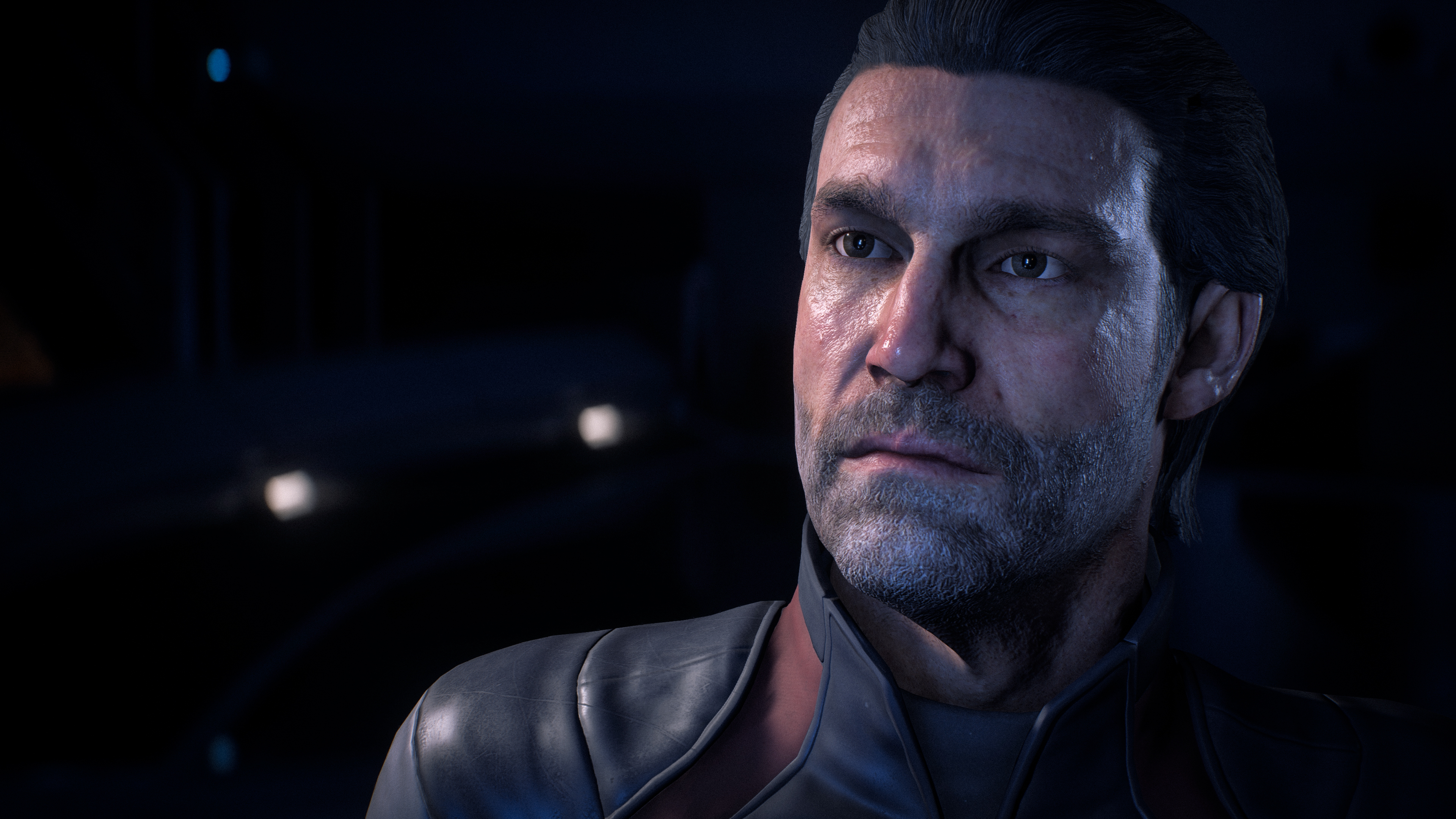
The year is 2185, and the Milky Way galaxy is no longer the thriving hub of life it once was. The Citadel Council rules that each of the galaxy's four primary races must ship 20,000 people off on a 600-year journey on huge spaceships known as Arks. And so, the Andromeda Initiative is born.
-
The Ryders
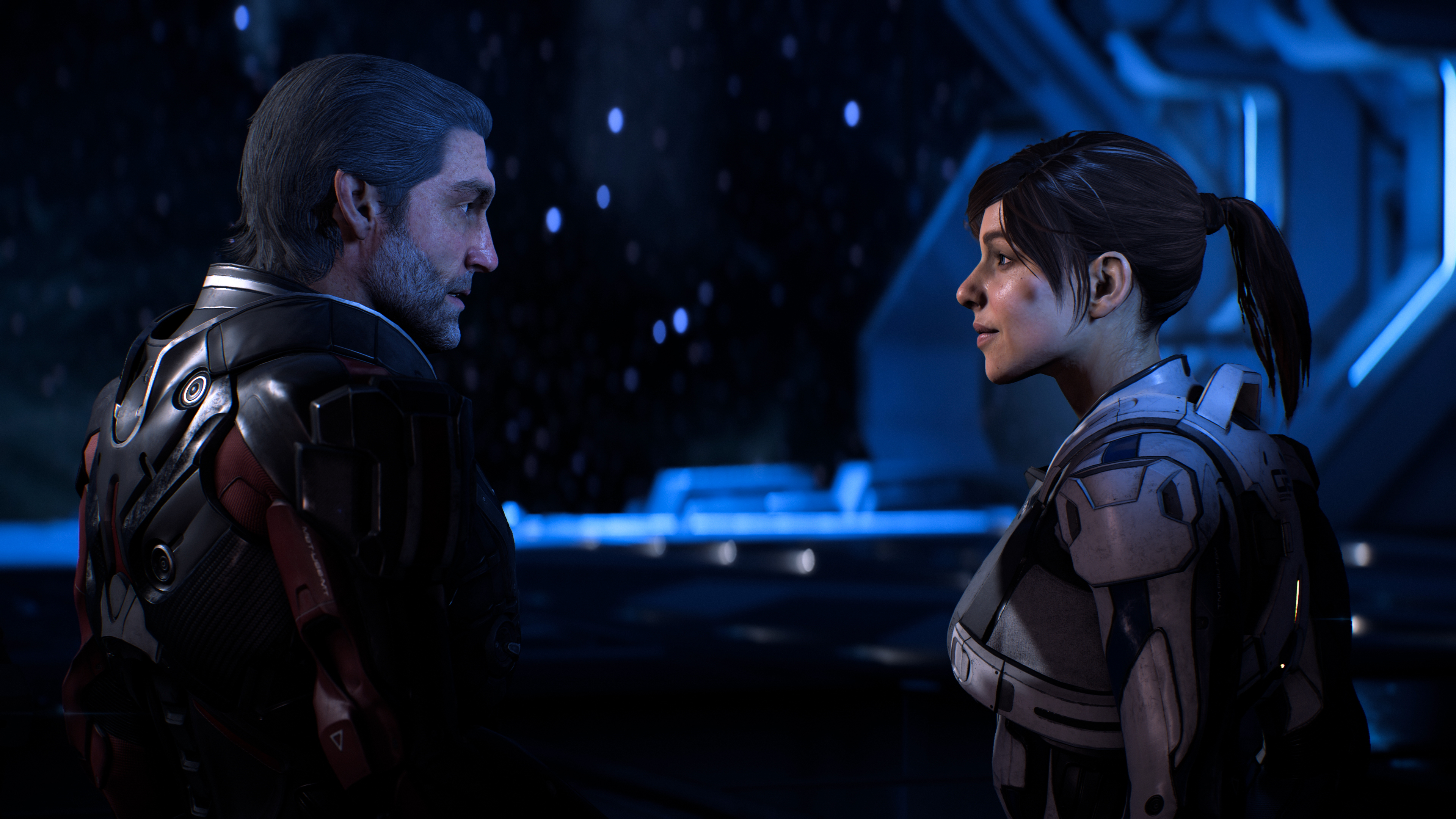
Meet Scott and Sara. Voiced by Tom Taylorson and Fryda Wolff, respectively, they're the dual protagonists of Mass Effect Andromeda, and it's fair to say that there's a spark of sibling rivalry underpinning their relationship.
-
An All-Star Voice Cast
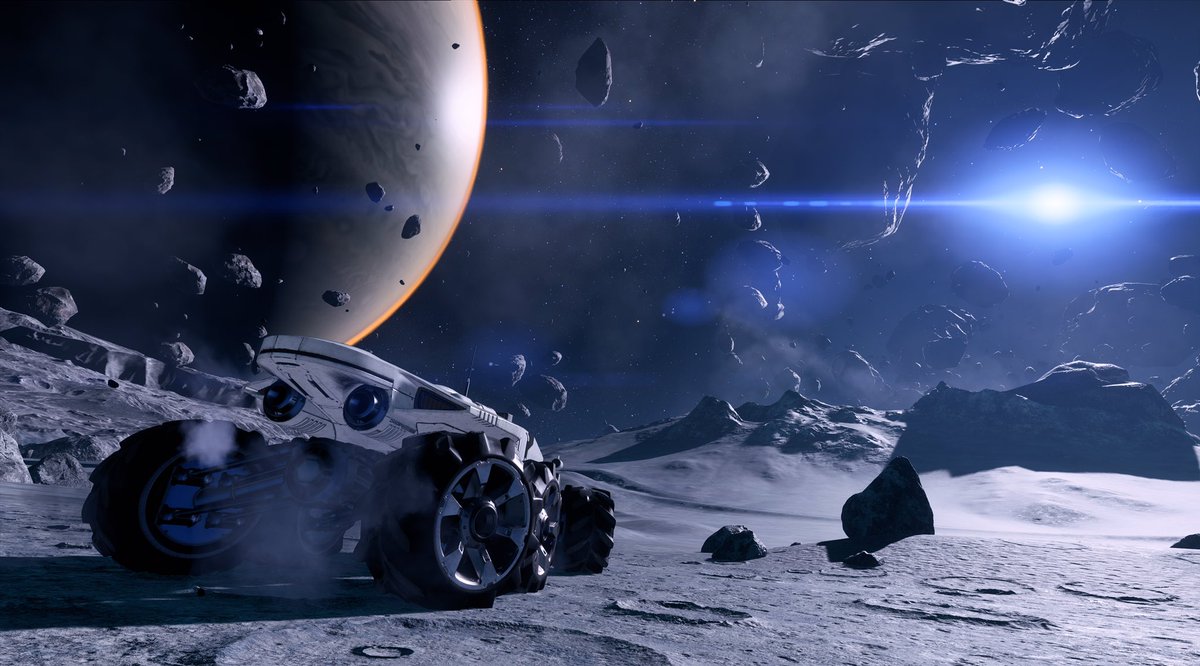
Part and parcel of Mass Effect's lasting appeal is the sheer volume of characters populating BioWare's space opera. Your squad mates include Nakmor Drack (Krogan), Vetra Nyx (Turian), Peebee (Asari), Cora Harper (Human), Liam Kosta and Jaal (Angara), and we know that Game of Thrones actress Natalie Dormer is among the voice cast.
-
Powered by Frostbite
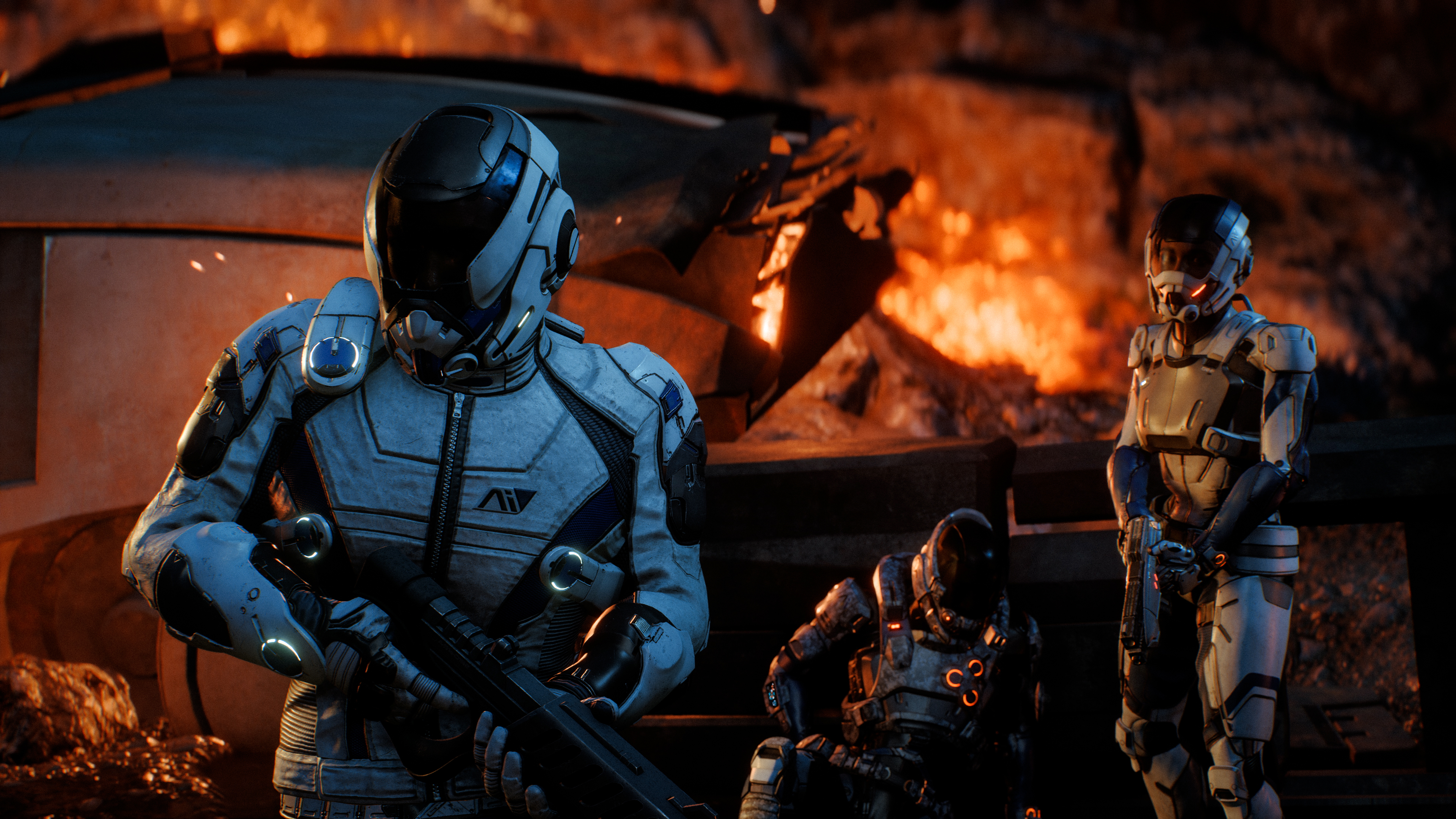
Not unlike FIFA 17 before it, Mass Effect Andromeda heralds a shift to the Frostbite game engine. It's EA's in-house engine that's served as the beating heart of the Battlefield franchise for generations and now, it is (almost) Mass Effect's turn to join the fray.
-
MASSive Worlds to Explore
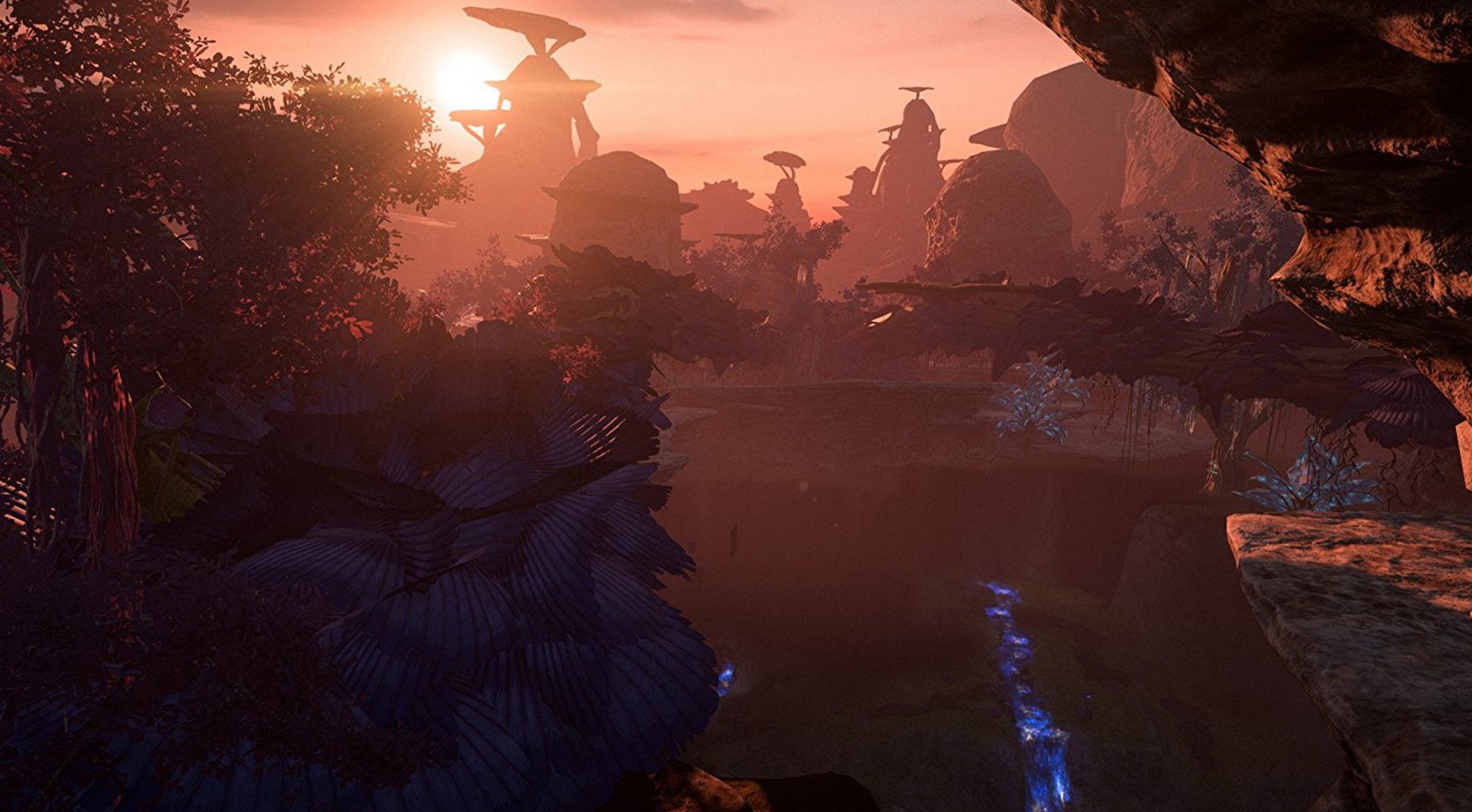
What’s a sprawling space opera with suitably huge planets to explore? Mass Effect Andromeda represents an opportunity for BioWare to up the ante, and according to producer Fabrice Condominas, some of the planets featured in the Andromeda galaxy are bigger than the entirety of Dragon Age: Inquisition.
“Oh, it’s bigger than any of the three [games in the original trilogy]. In terms of the footprint, for example, it’s gigantic. One planet can be the size of Dragon Age: Inquisition as a whole. Not all of them, but some of them. But it gives you an idea of scale.
“But also in terms of, for example, the progression system, it’s probably the deepest we ever made. So even in terms of mechanically, the crafting system is probably the one we pushed further than any in the three. So it’s definitely bigger.”
-
Just Don’t Call it Open World
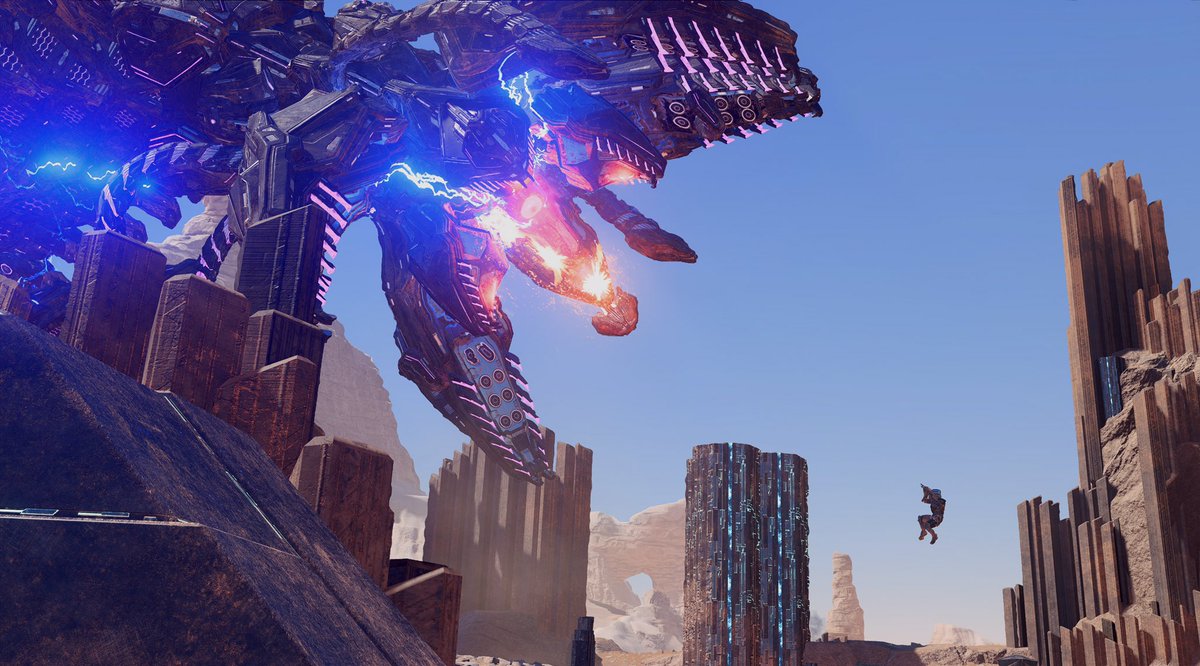
Mass Effect Andromeda is an “exploration-based game,” make no mistake about it. That means it isn’t an open-world experience, strictly speaking, with producer Michael Gamble noting that:
“You still have the concept of tight story deliverance and all the great things you come to expect with Mass Effect. The layer on top of that is a layer of exploration. Sometimes that happens in open spaces, but not always. You can cruise around some of these planets in the Nomad, but it’s not the traditional sandbox-type game.”
-
Side-Quests in the Vein of The Witcher
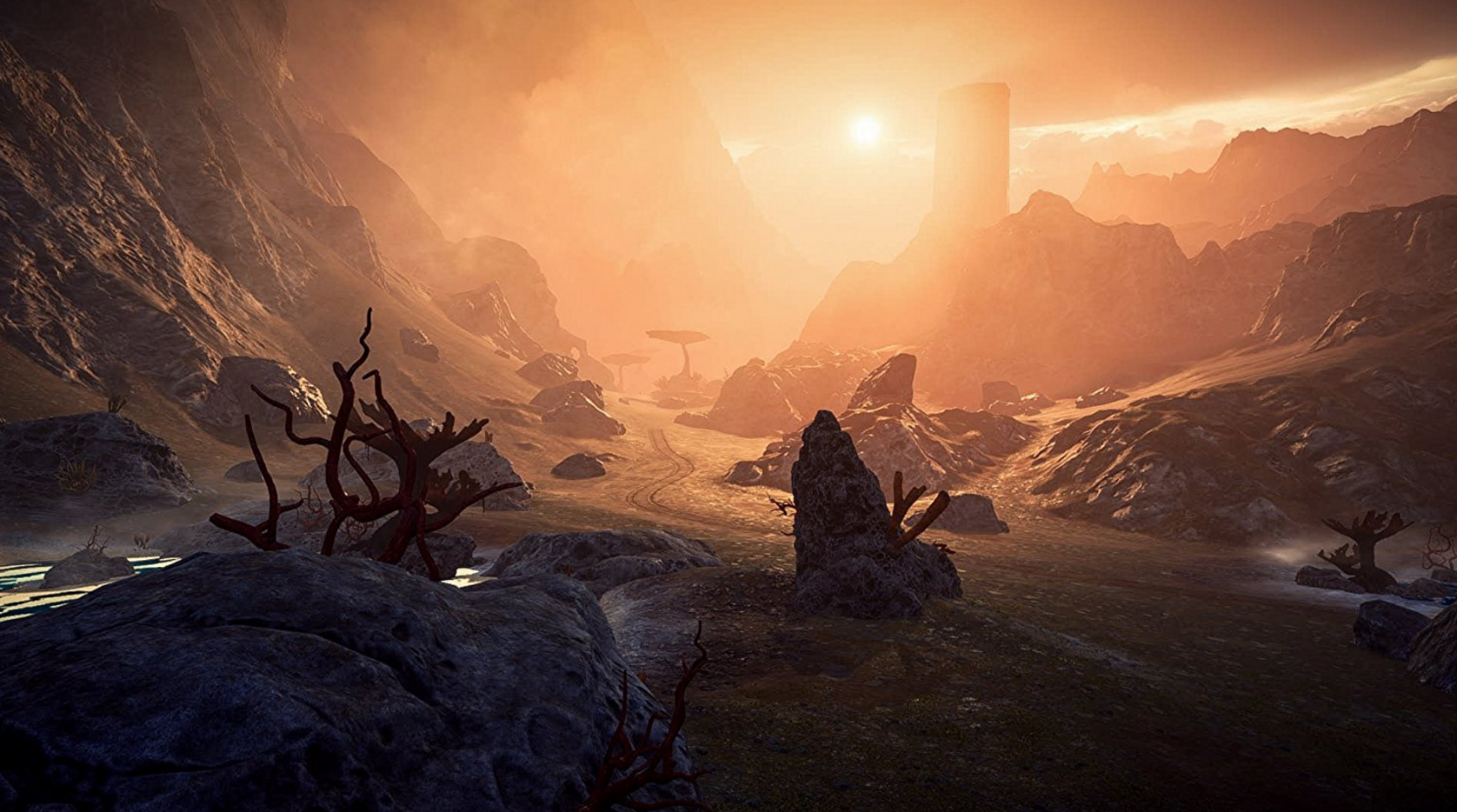
If you’re gunning for Andromeda’s Platinum Trophy, you’ll be pleased to note that BioWare has revamped side-quests, and is taking a leaf out of The Witcher’s book. Gone are the annoying fetch quests seen in Dragon Age: Inquisition — at least, that’s the hope.
Per BioWare:
“We are approaching the completionist aspect very differently, because we’ve done and learned a lot from Inquisition. But we’ve also observed what other games have been doing, like The Witcher. And it was very important for us that the quantity of scope doesn’t downgrade the quality of whatever you are doing there.”
-
A Space Opera Through and Through
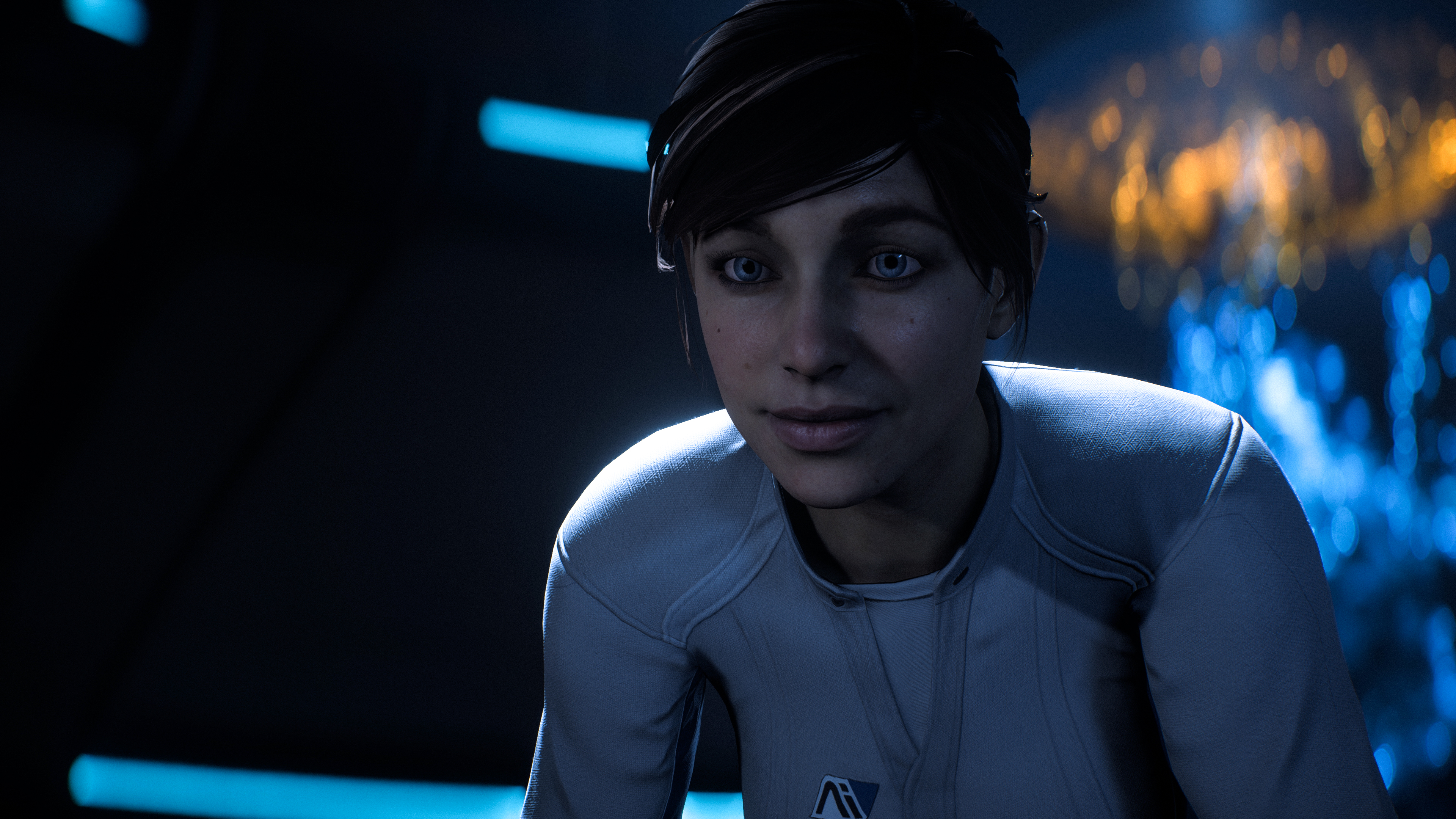
Producer Fabrice Condominas recently revealed that, while more recent entries in the series strayed into full-blown action territory, Andromeda heralds a return to the space opera you know and love.
“Yeah, I think that’s part of it. It’s also that the story of the trilogy was going narrower and narrower. Obviously that’s because you’re focused on the resolution of your story, so that’s good, but it means that you get away a bit from the space opera, from the main theme at a high level. That is definitely part of the vibe I wanted to bring back. It’s not the only aspect: you’ve got the space travel, the notion of going to uncharted worlds. It’s a bundle of things. But it is part of it.”
-
A Diverse Collection of Planets
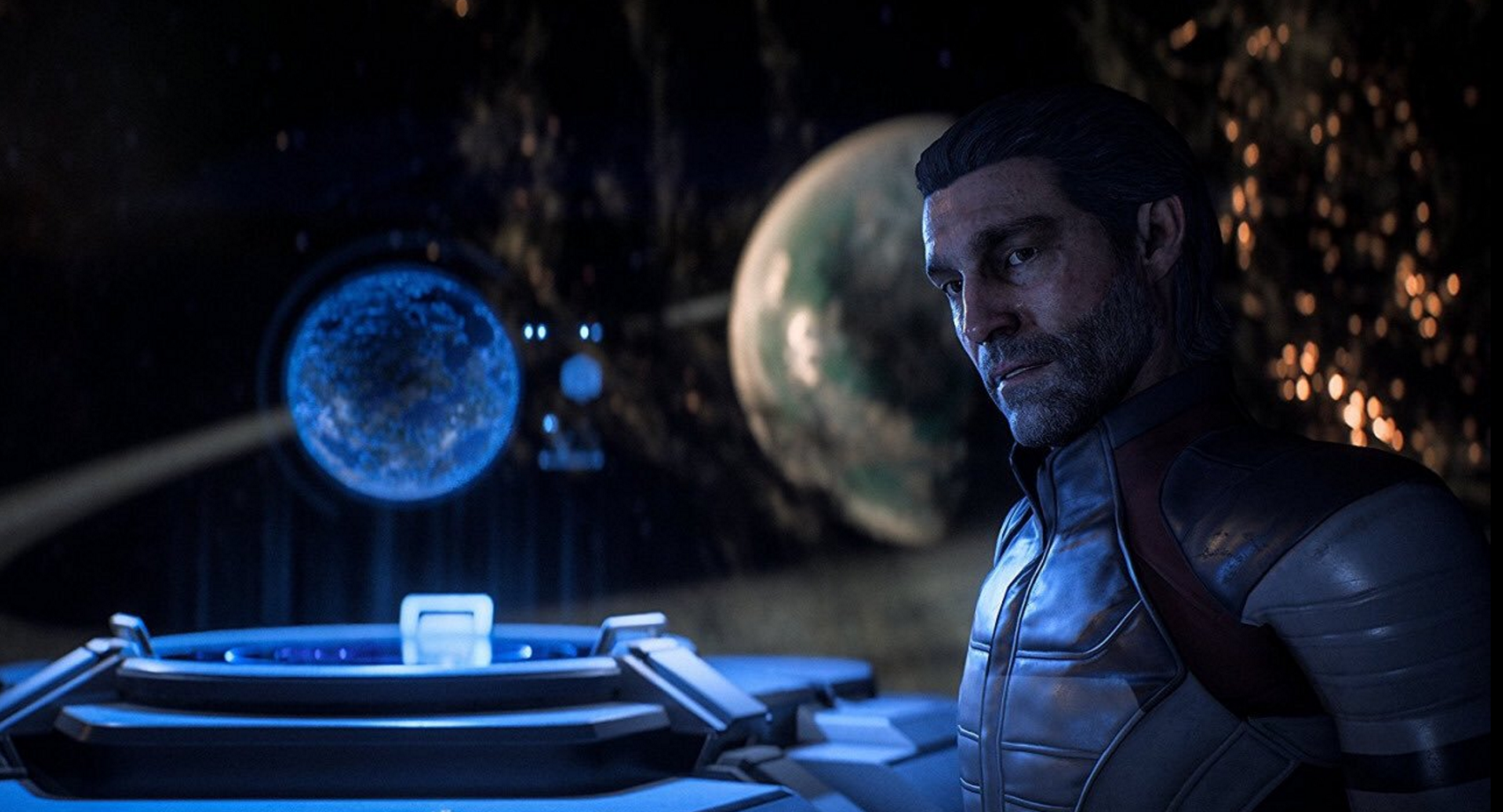
From solar radiation to bitter-cold temperatures, the planets in Mass Effect Andromeda are as dangerous as they are varied. Brace yourself for a host of environmental hazards, Pathfinder.
-
Space Romance and “Pretty Good Banging”
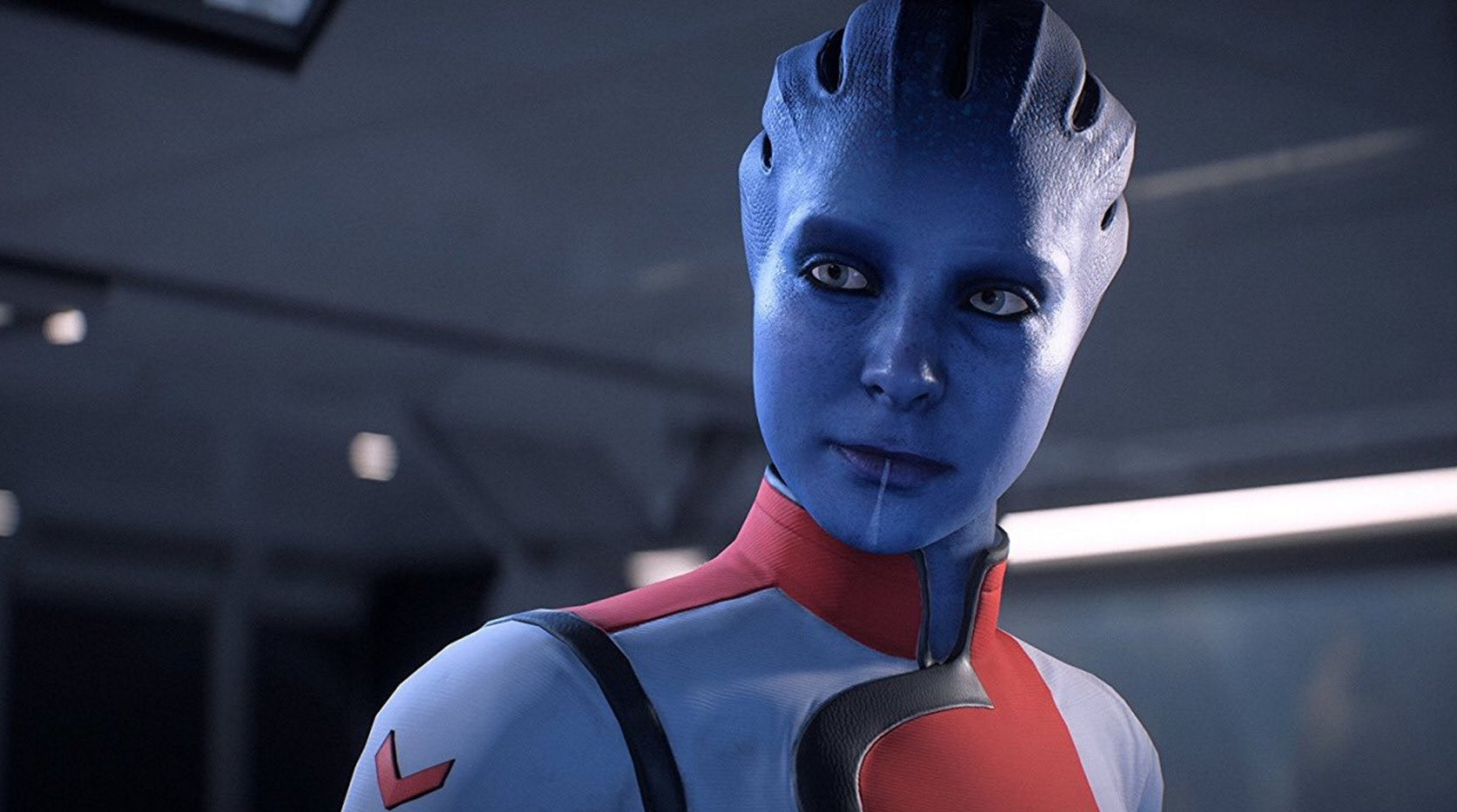
Knockin’ boots in the cosmos? BioWare knows a thing or two about that and sure enough, Mass Effect Andromeda won’t skimp on the romantic subplots. When asked “WHO CAN I BANG?!” by one particularly impassioned user, producer Michael Gamble replied as so:
“So many. And the banging is pretty good.”
-
Over 1,200 Unique Characters
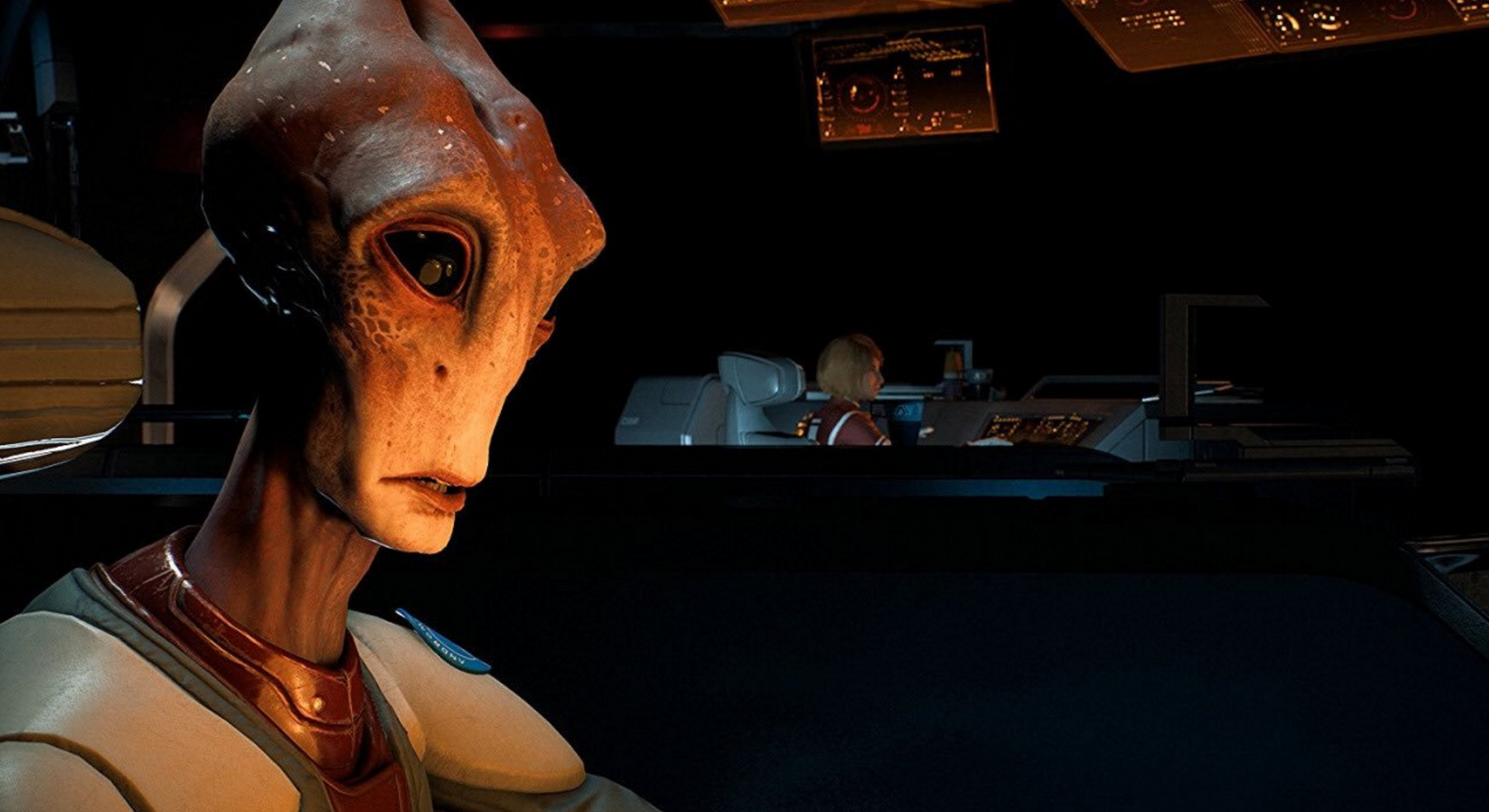
Mac Walters, Creative Director on Mass Effect Andromeda has confirmed that there are more than 1,200 unique characters in the sci-fi title. That’s a considerable markup from the previous entry in the decorated series, Mass Effect 3, which boasted around 670 characters.
“The lines of dialogue we have in Andromeda is like Mass Effect 2 and 3 combined. So the number of characters is vaster, but the amount of stuff you and that character can talk about is also larger—especially the squad, we definitely focused in on the squad.”
-
Clocked 1080p/30fps on PS4, Will Include HDR Support
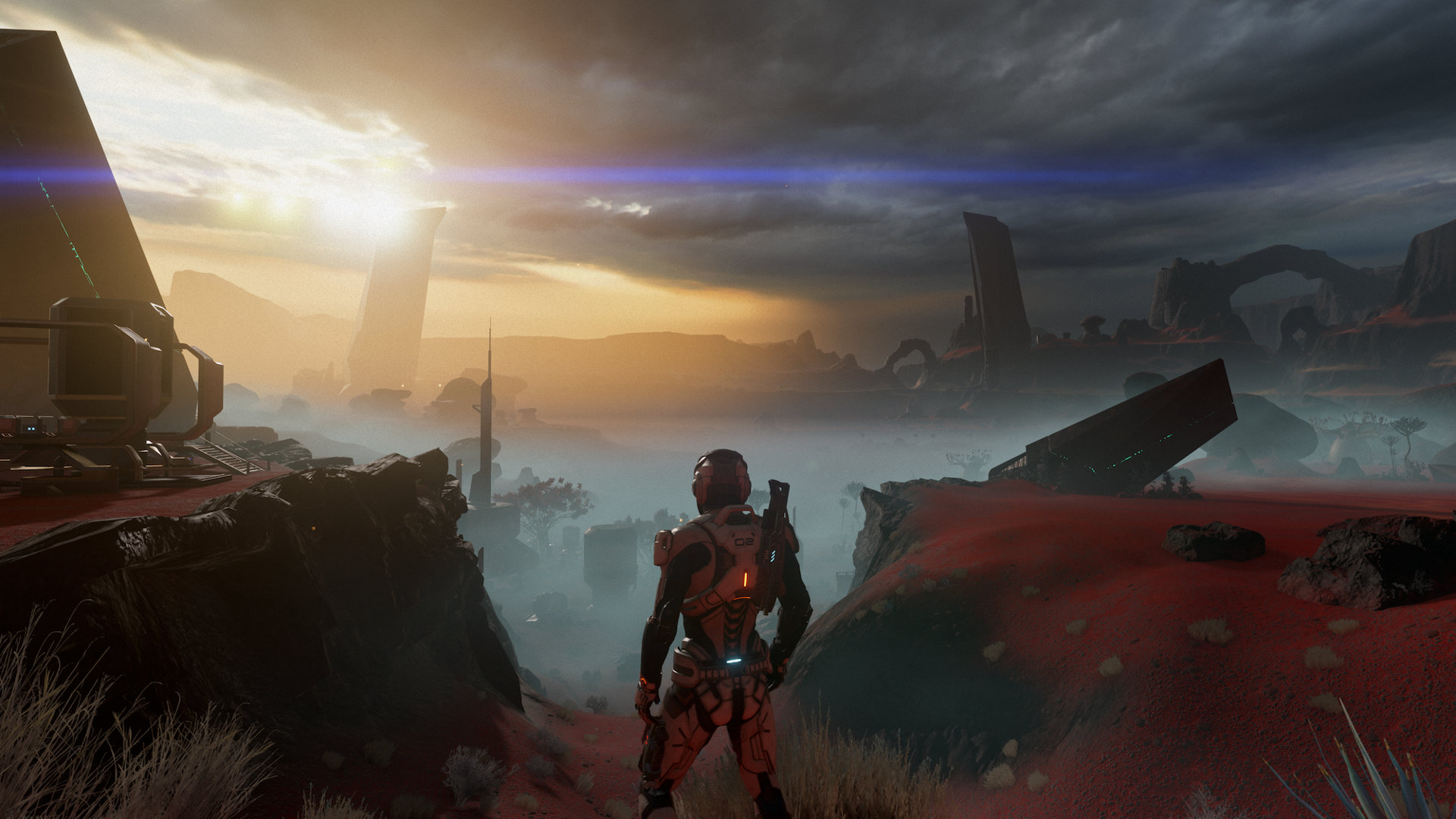
Mass Effect Andromeda has been clocked at 1080p/30fps on PS4, and will support HDR.
Per BioWare:
“Last I checked, we were like other Frostbite games on PS4 and Xbox One – 1080p and 900p respectively. All are at 30 fps. PC has uncapped frame-rate. I think we’ve even gotten over the 30 fps cap in cut-scenes, but I’ll double-check in the next couple of weeks.”
-
PS4 Pro and 4K
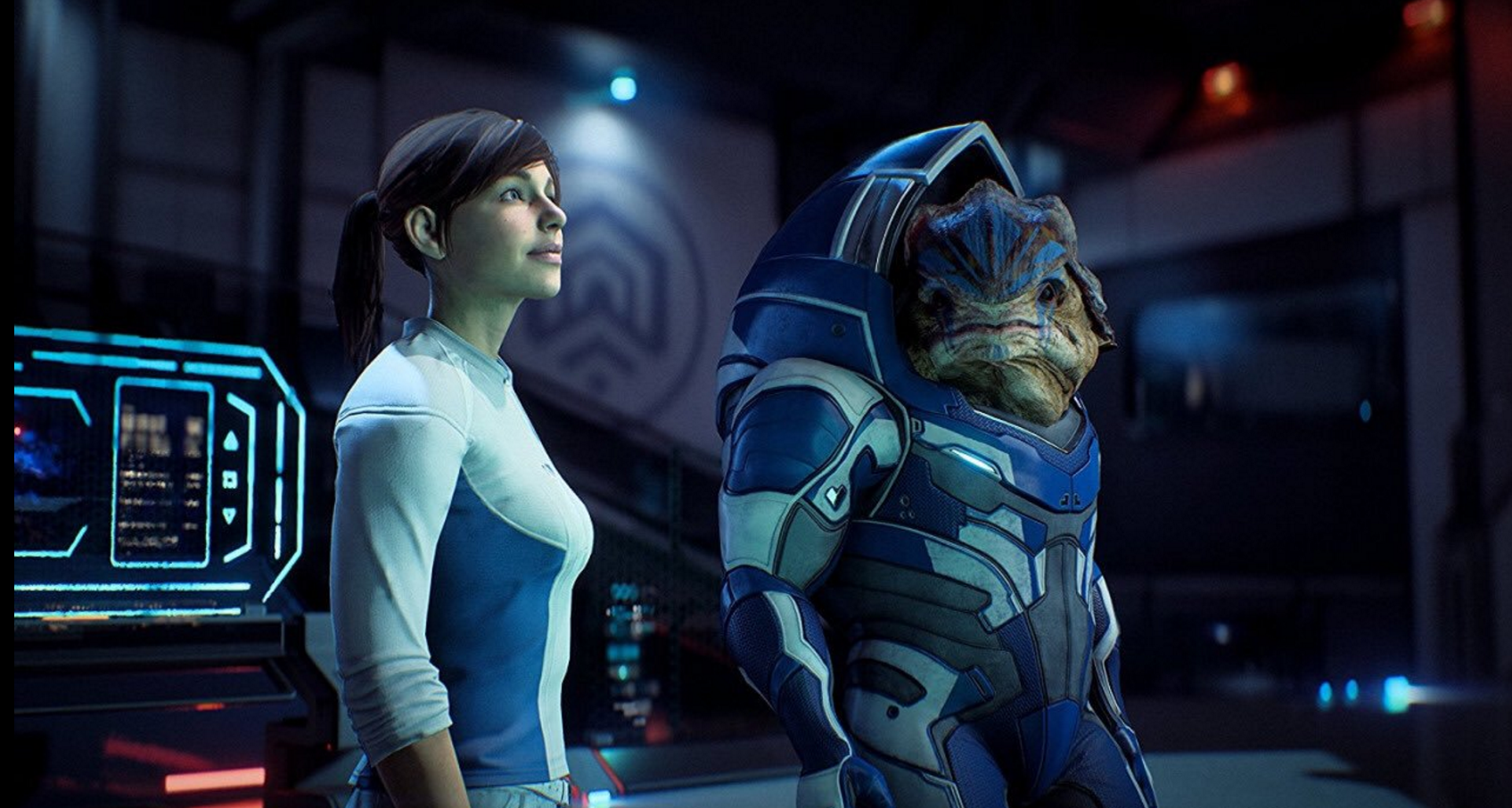
Thanks to a CG technique known as checkerboard rendering, Mass Effect Andromeda is able to achieve 1800p on PS4 Pro. It’s part of BioWare’s dual strategy to support high-end video outputs, including 4K.
“Super-sampling again is very popular for HDTV support. Mass Effect Andromeda has two very different strategies. They have checkerboard for 4K and they have a separate mode for high quality graphics at 1080p.”
-
Introducing Andromeda Points
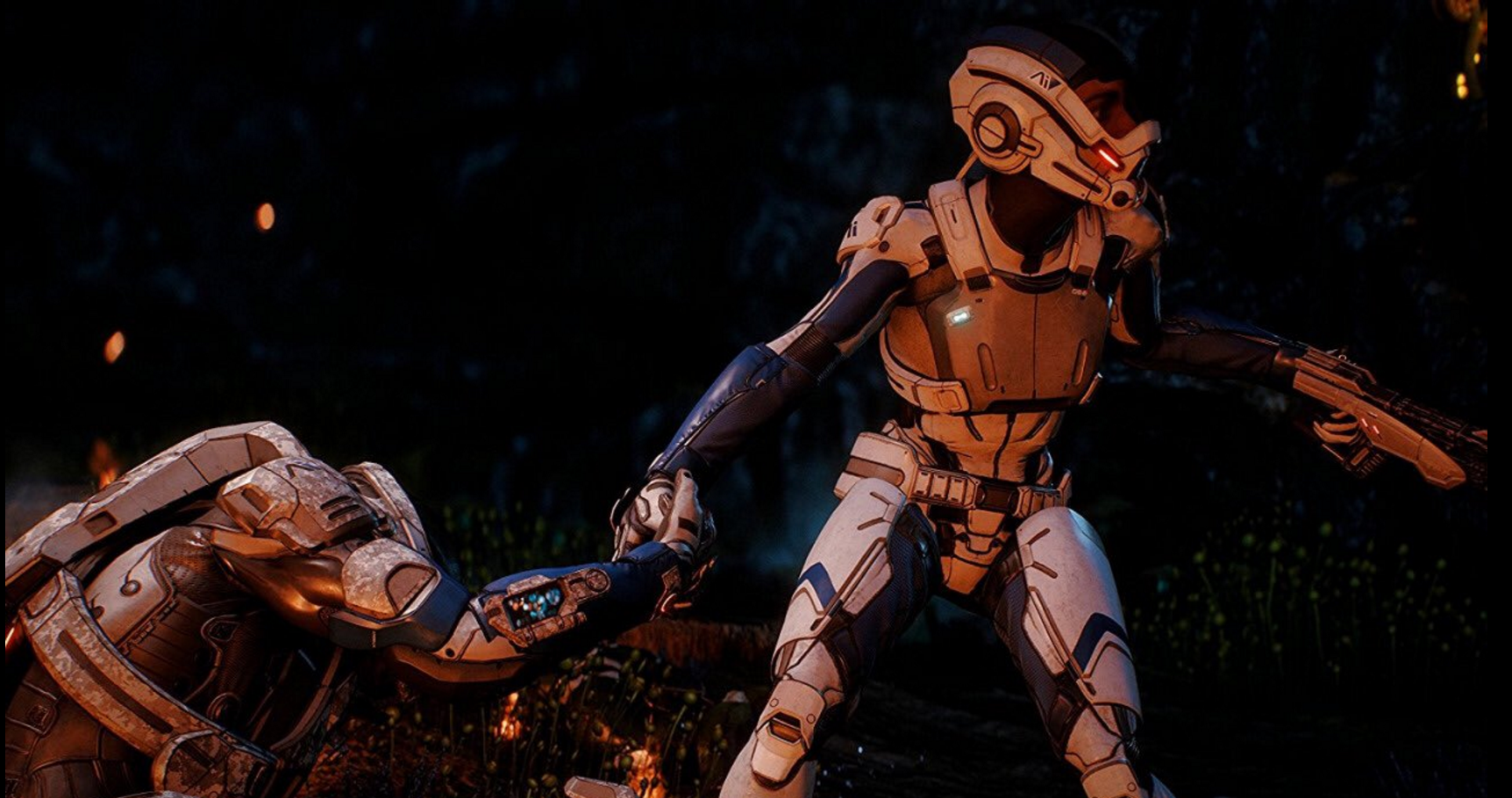
As previously reported, Mass Effect Andromeda will feature an in-game currency known as Andromeda Points. These are restricted to multiplayer and multiplayer only, and though we’ve only caught wind of the UK pricing — SKUs begin at £4 all the way up to £80 — but we’ll keep you posted if and when BioWare discloses the EU and US pricing.
“Andromeda Points are an in-game currency for the Mass Effect: Andromeda Multiplayer mode only. These points can be purchased with real world currency and can be used instead of the earned in-game currency to obtain new Multiplayer packs, which contain items used in the Multiplayer mode.”
-
Multiplayer Beta Canned
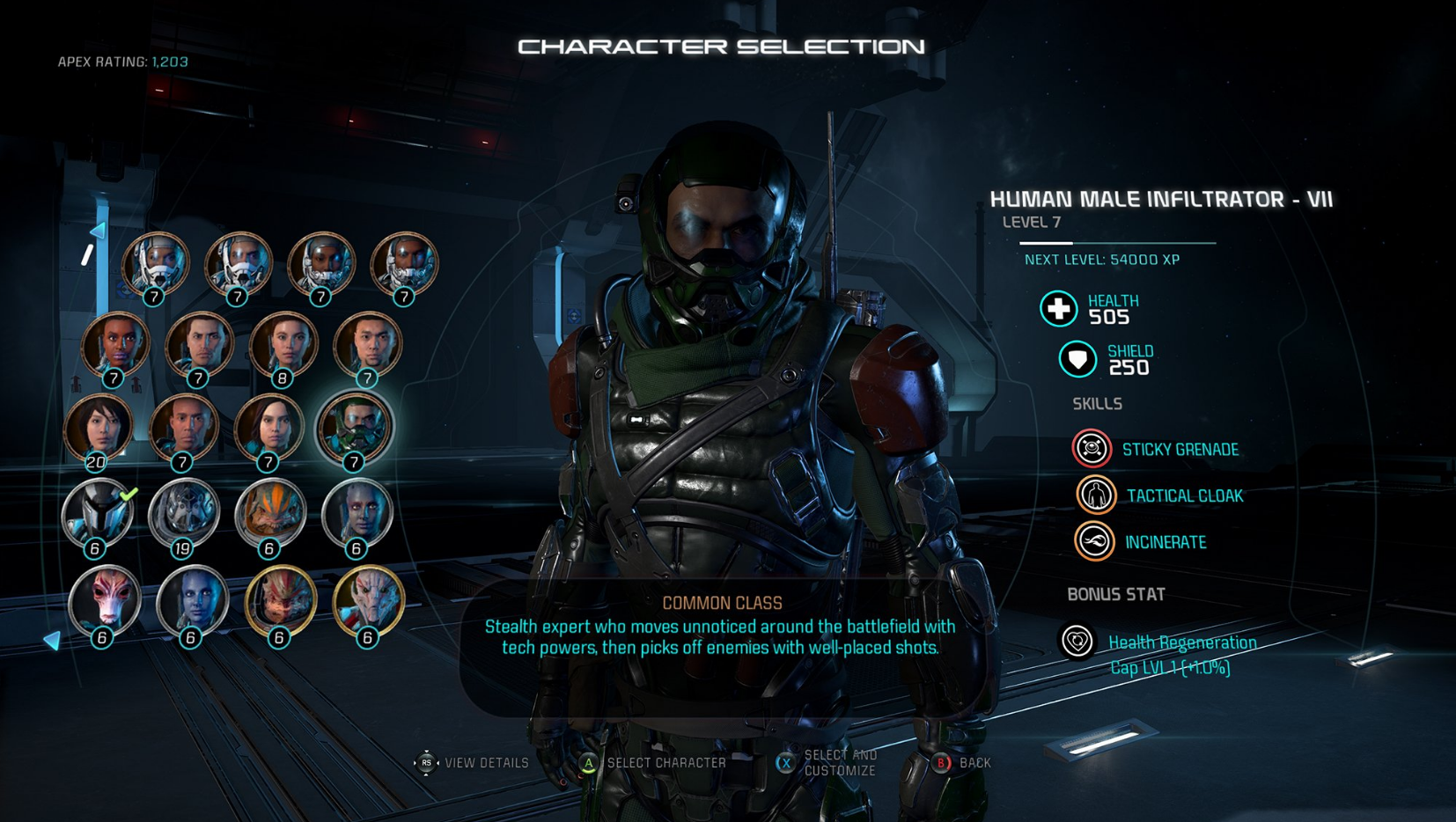
While BioWare hosted a demonstration of Andromeda’s multiplayer component at the recent PAX East 2017, the studio ultimately decided to cancel the long-anticipated multiplayer beta, stating that:
“While we will have live multiplayer at PAX East, there will no longer be a multiplayer tech test for players at home. Thank you to everyone who signed up. We look forward to seeing you in Andromeda.”
-
Free MP Maps After Launch
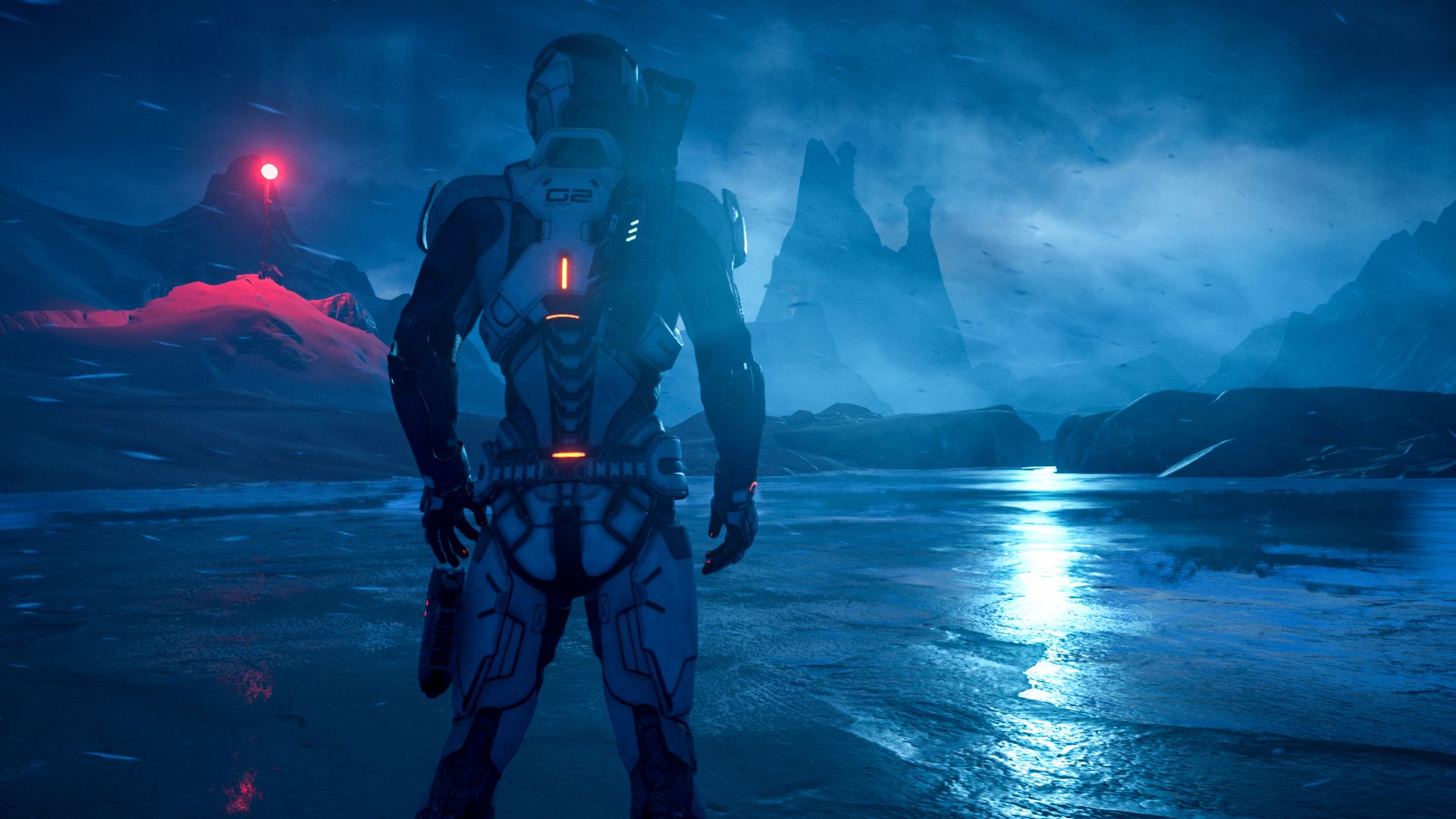
Much like Mass Effect 3 before it, BioWare is preparing to roll out a series of new multiplayer maps free of charge. Expect further details to be shared after launch.
-
No Season Pass
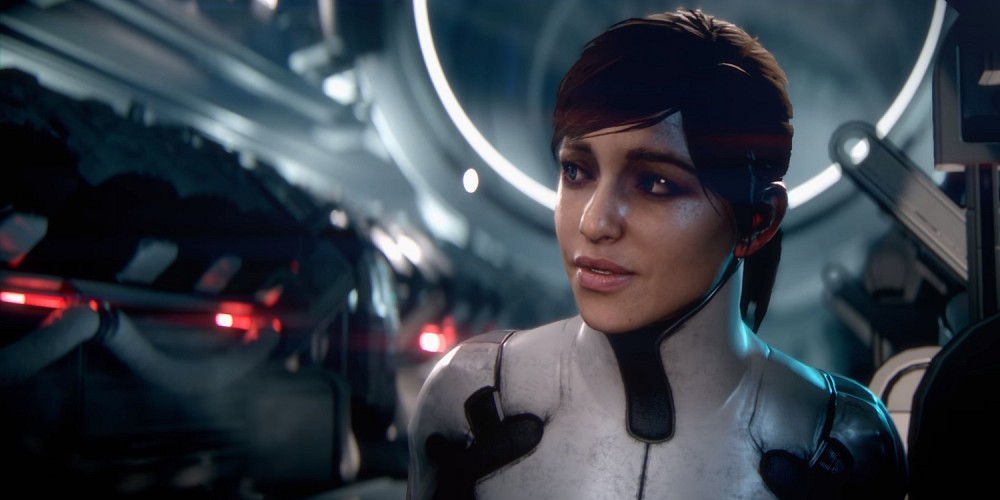
Free multiplayer DLC is clearly part of BioWare’s plan for the future of Mass Effect Andromeda, but one thing that the studio has ruled out altogether is a Season Pass, which is a fairly big departure from the EA of old.
-
Play Early With EA Access
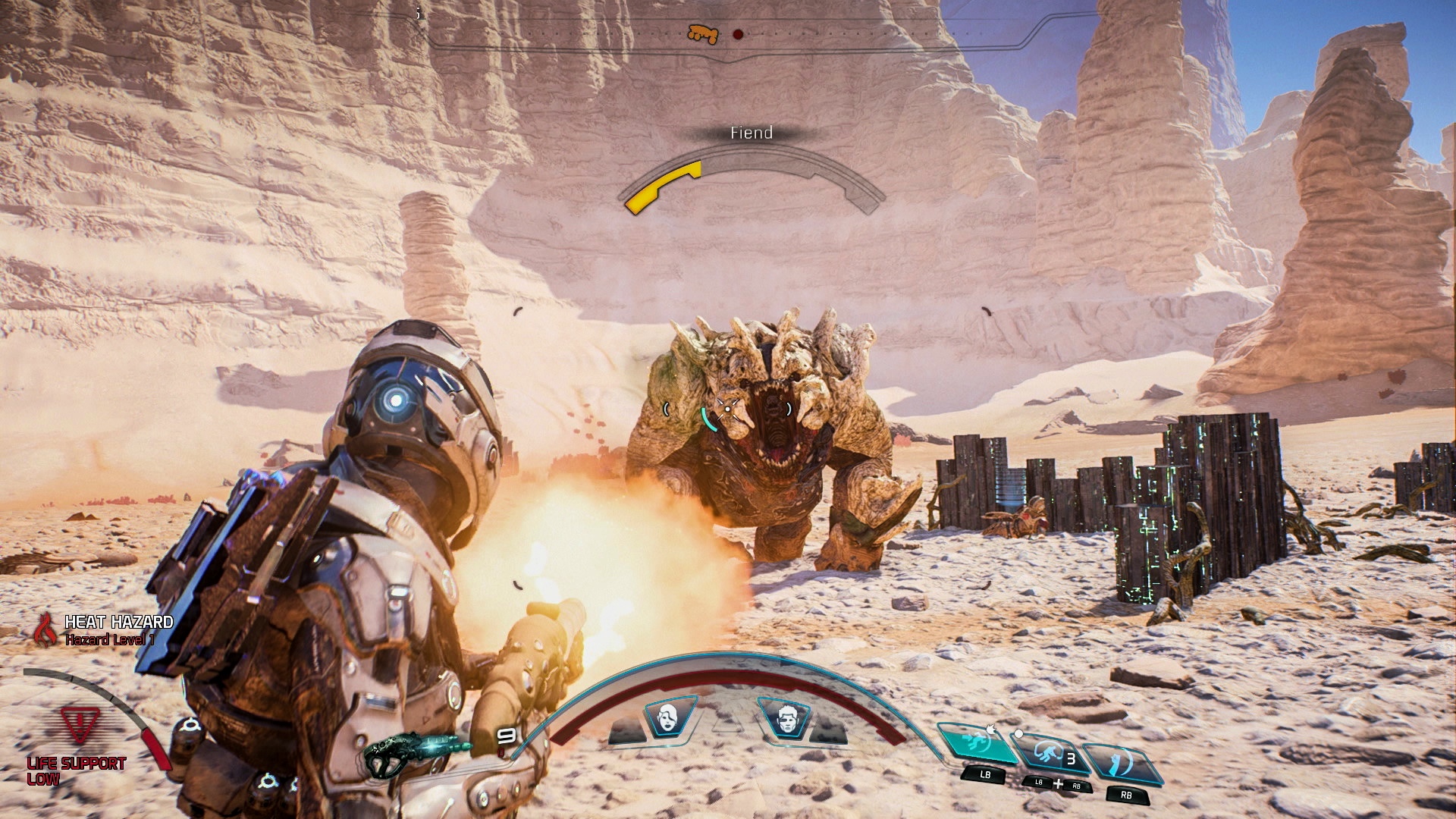
From March 16, EA Access and Origin members will gain access to a 10-hour session in Mass Effect Andromeda.
Details of how to sign up can be found here, should you feel so inclined.
"Your journey starts early with EA Access and Origin Access. Take to the stars and enjoy 10 hours of gameplay (including full multiplayer access and a chance to explore your first planet in single-player) starting days before launch. Plus, your save progress carries over if you decide to buy the full game, and you’ll save 10% automatically with your membership."
-
No Time Pressures
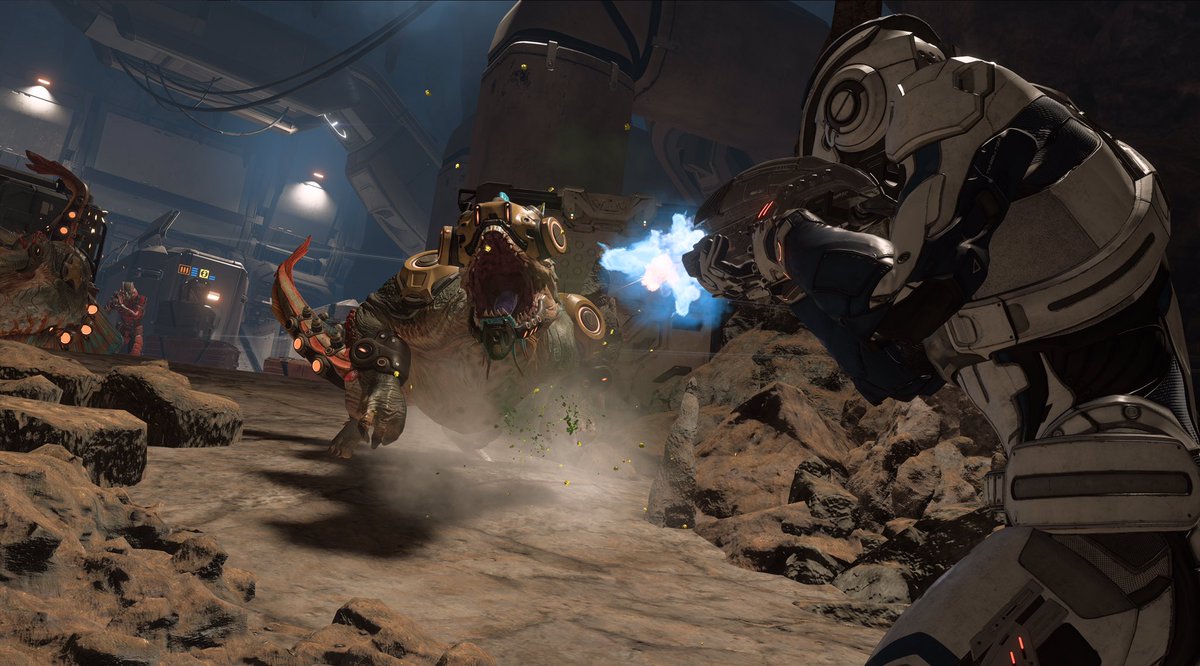
Eager to explore Mass Effect Andromeda at your own leisurely pace? Well, now you can! Thanks to BioWare’s decision to remove the series’ time pressure. No more rushing through missions and other side-quests on the clock.
Here’s what producer Fabrice Condominas had to share:
“We consciously removed the time pressure. The people in the Ark are waiting for a home, right, but this is why most of them stay in cryo and all that. The idea is, we want you to be able to explore freely. You’re right, in Mass Effect 3 sometimes it was like “what am I doing, people are dying and I’m just hanging around.
“So it’s a good question. But no, narratively, we did remove the time pressure. We keep the stake – you need to save these people – but you can take time to explore. Also in this game, unlike the others, once you’re done with the story you can keep exploring. [The world state] will remain consistent with the choices you made along the main story, but it’s still open. The game is not done when the story’s done.”
-
Lofty Sales Target
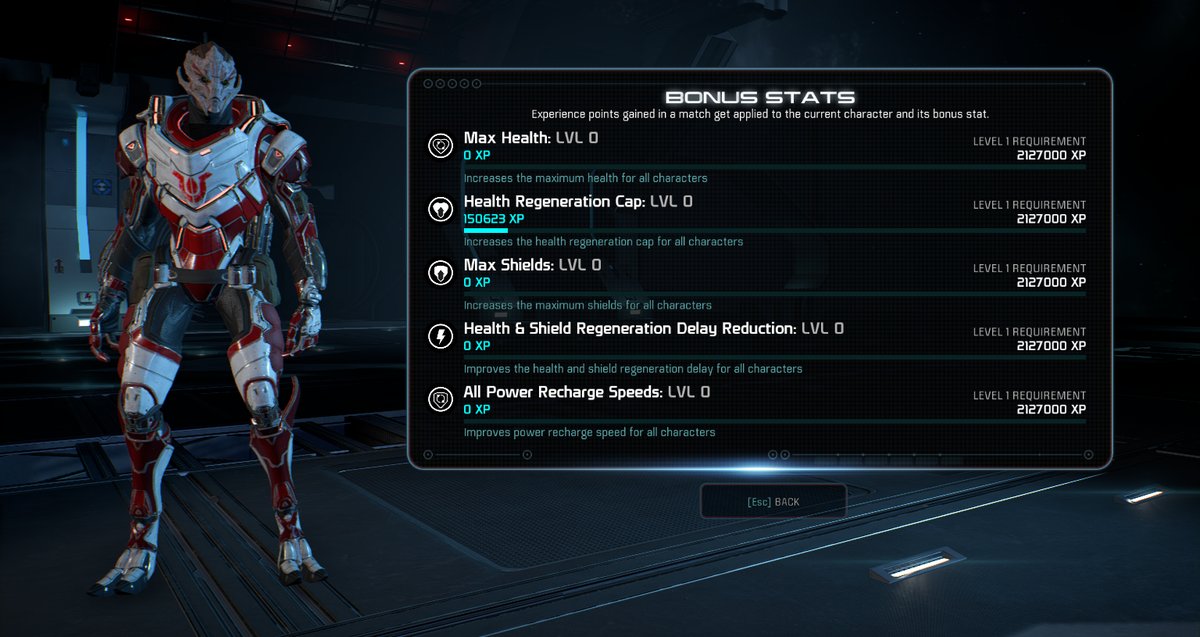
With D-day fast approaching, BioWare is confident Mass Effect Andromeda has what it takes to move upwards of 3 million copies at launch. For the sake of comparison, Mass Effect 3 sold around six million units lifetime.
-
A Hefty Digital Download
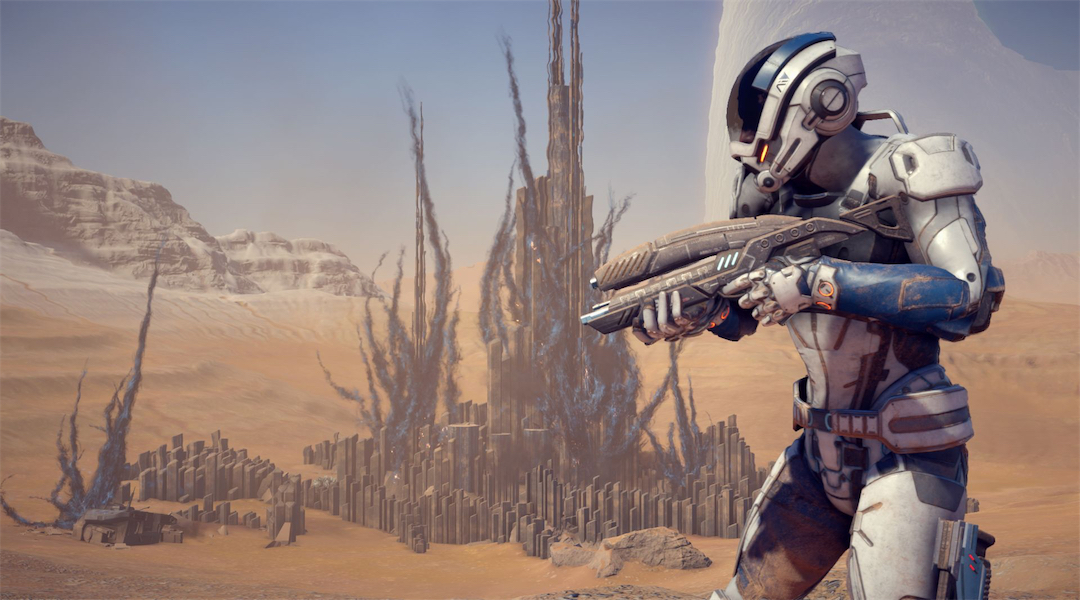
BioWare is yet to lock down the official file size at the time of writing, but according to early estimates, Mass Effect Andromeda will be “at least 45GB” on consoles, and closer to 55GB for those on PC.
-
Hands-On Preview
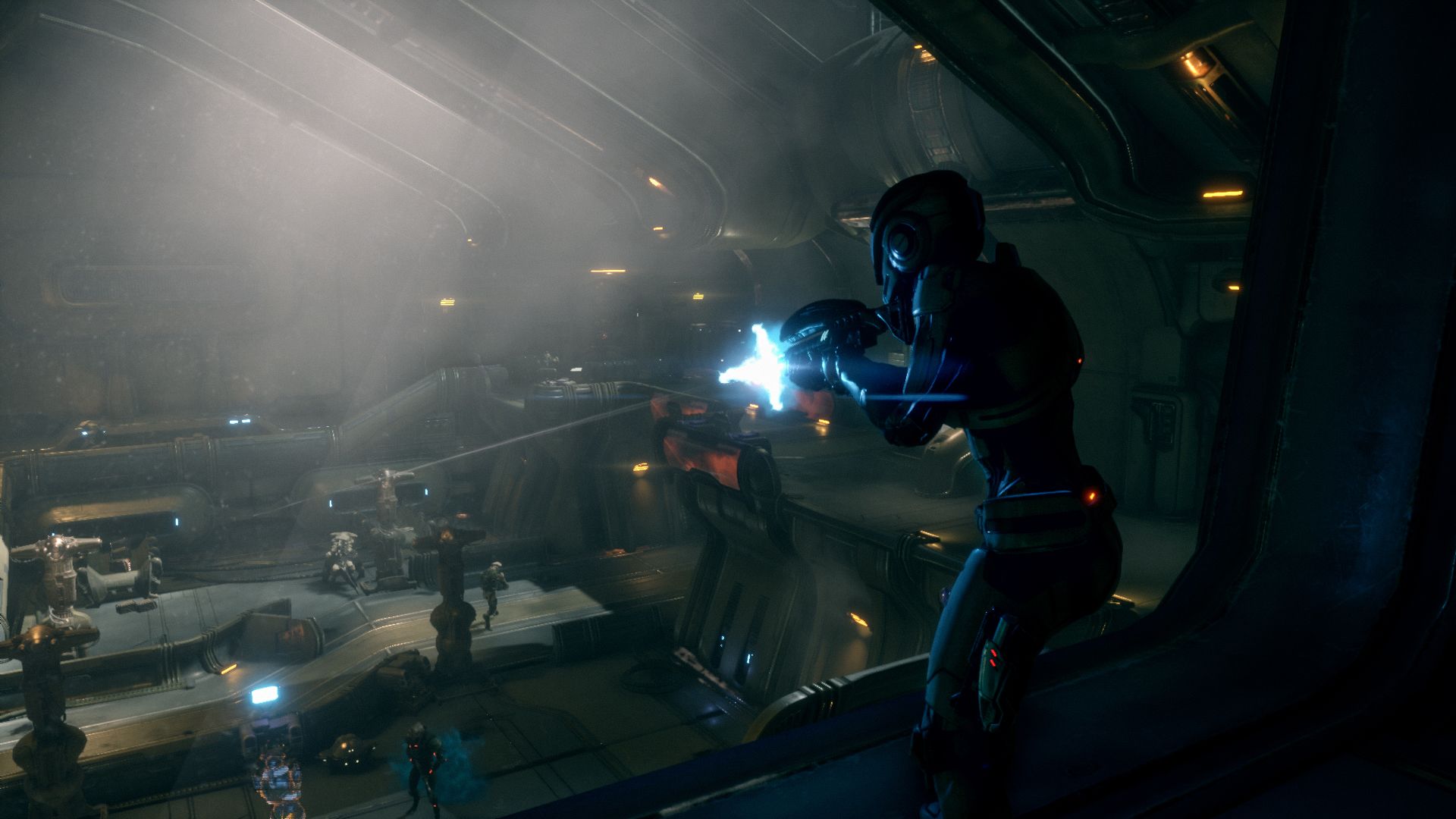
Our own Louis Edwards got his hands on an early build of Mass Effect Andromeda, and walked away largely impressed.
“Developer BioWare has taken a risk by taking a well-known franchise and creating new characters and a new story arch, all the while sticking to what fans of the series have come to love. It seems like the risk may have paid off and this is one space adventure that should be on your radar.”
-
Strategy Guides
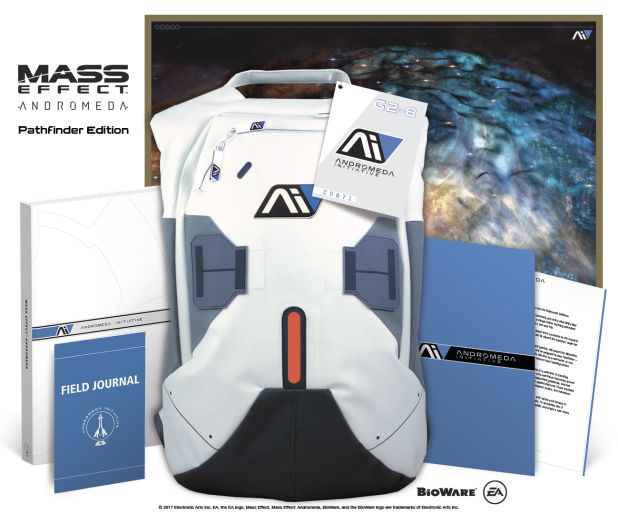
Prima Games is launching not one, not two, but three strategy guides for Mass Effect Andromeda. Pricing is yet to be confirmed at the time of writing, but we do know the premium Pathfinder Edition (left) comes packing a Mass Effect Andromeda Initiative backpack, a welcome letter, multiplayer booster pack DLC, a galaxy chart, a field journal, and a branded envelope.
-
Trophy List
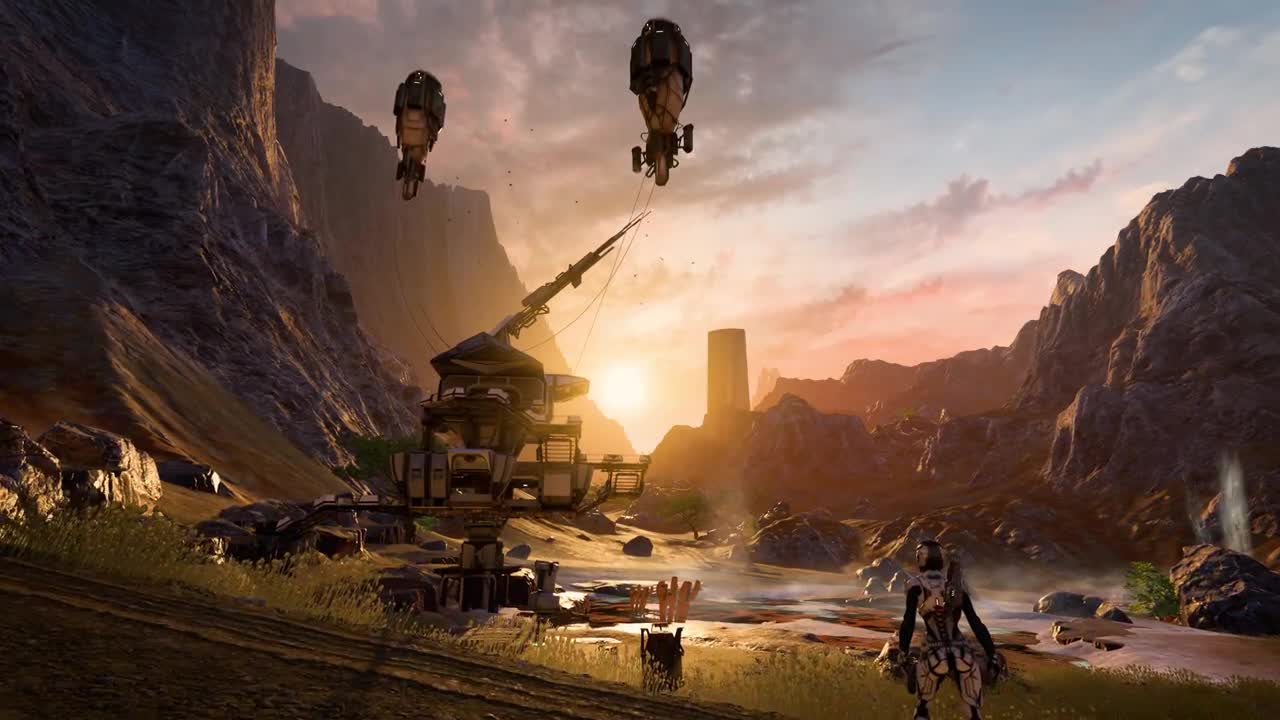
Comprised of 56 accolades in total, the official Trophy list for Mass Effect Andromeda can be found right here, courtesy of Exophase.
-
One of 2017’s Biggest

When collecting our own most-anticipated games of 2017, the PSLS crew pinpointed the likes of Red Dead Redemption 2, Persona 5, and, of course, Mass Effect Andromeda.
-
Launch Trailer & Cinematic Trailer
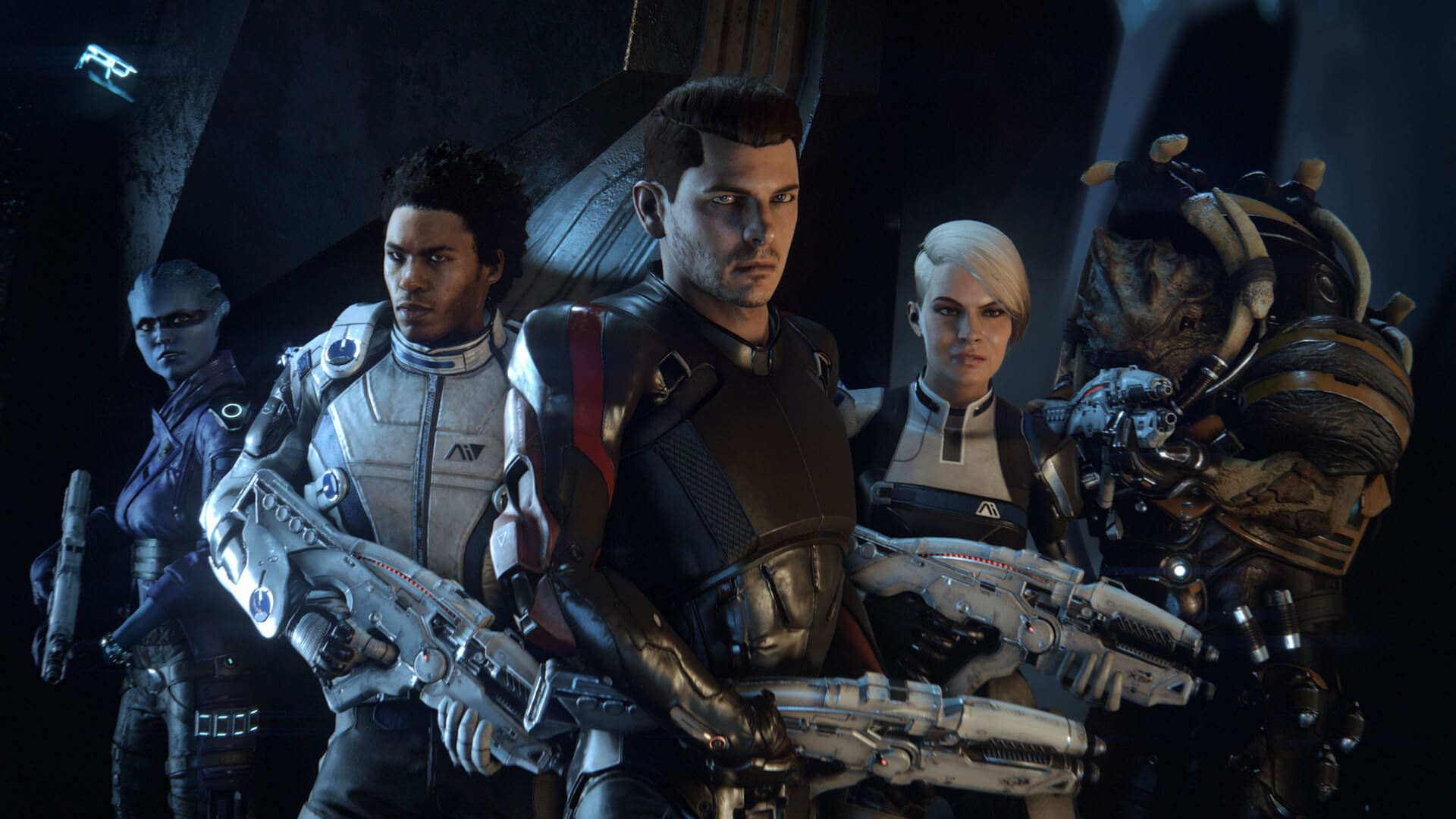
The future of humanity rests on your soldiers, Pathfinder, and the official cinematic trailer for Andromeda asks the question: How far will you go?
There's also a launch trailer that found its way online late last week.
“Unravel the secrets of a vast galaxy, battle hostile alien threats, and build a crew to help you survive it all in Mass Effect Andromeda. Humanity’s future rests on your shoulders. How far will you go?”
-
Rated M for Mature
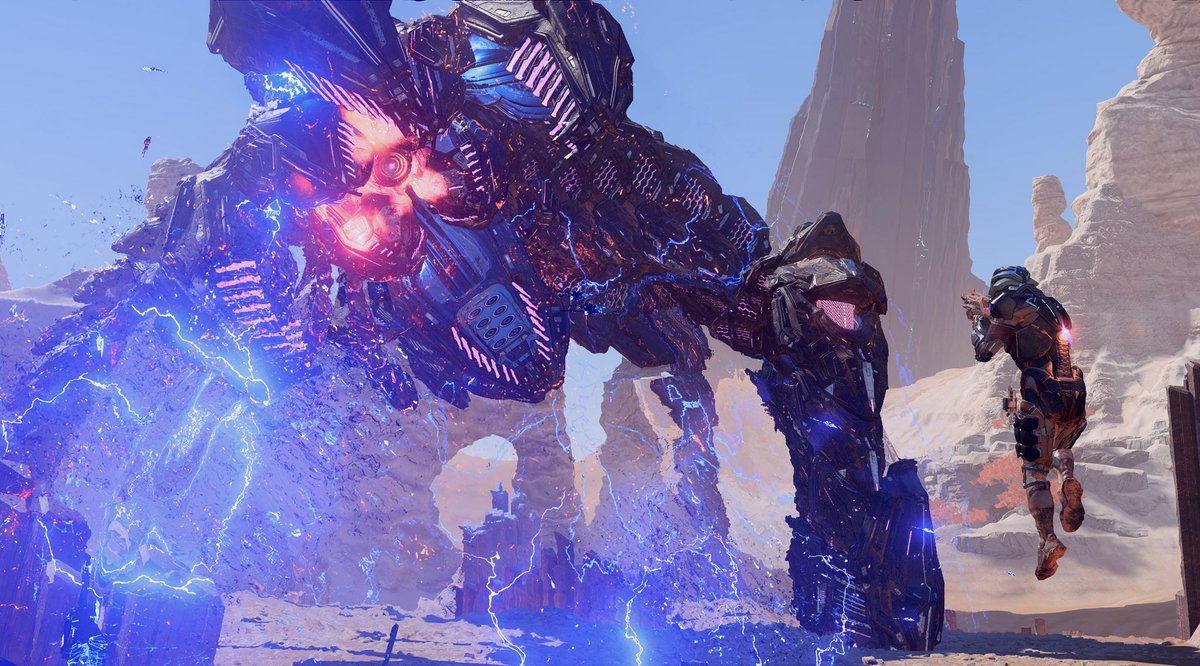
It’s official: Mass Effect Andromeda has been rated M for Mature. Citing blood, nudity, strong language, strong sexual content, and violence, the ESRB description follows:
“This is an action role-playing game in which players lead humanity to a new home across the galaxy. As players explore various planets, they use futuristic weapons (e.g., laser rifles, Cryo-beams, shotguns) and special abilities (e.g., concussive blasts, telekinetic pushes) to combat hostile alien races. Battles are frenetic, highlighted by realistic gunfire, explosions, and screams of pain; enemies sometimes emit splashes of blood when hit.
“During the course of the game, the central character can develop relationships with crew members and engage in brief sexual encounters with them. These brief sequences (couplings) depict sensual caresses, sexual moaning, and hip gyrations; characters’ breasts and/or buttocks are sometimes exposed for prolonged periods. The words “f**k,” “sh*t,” and “a*shole” can be heard in the dialogue.”
-
Unboxing That Shiny Collector's Edition

With only a few days left between now and release, Keri Honea cracked open the lid of the Mass Effect Andromeda Collector's Edition. Included in that premium package is a replica of the aforementioned Nomad, along with a hoard of in-game bonuses.
-
Our Final Verdict
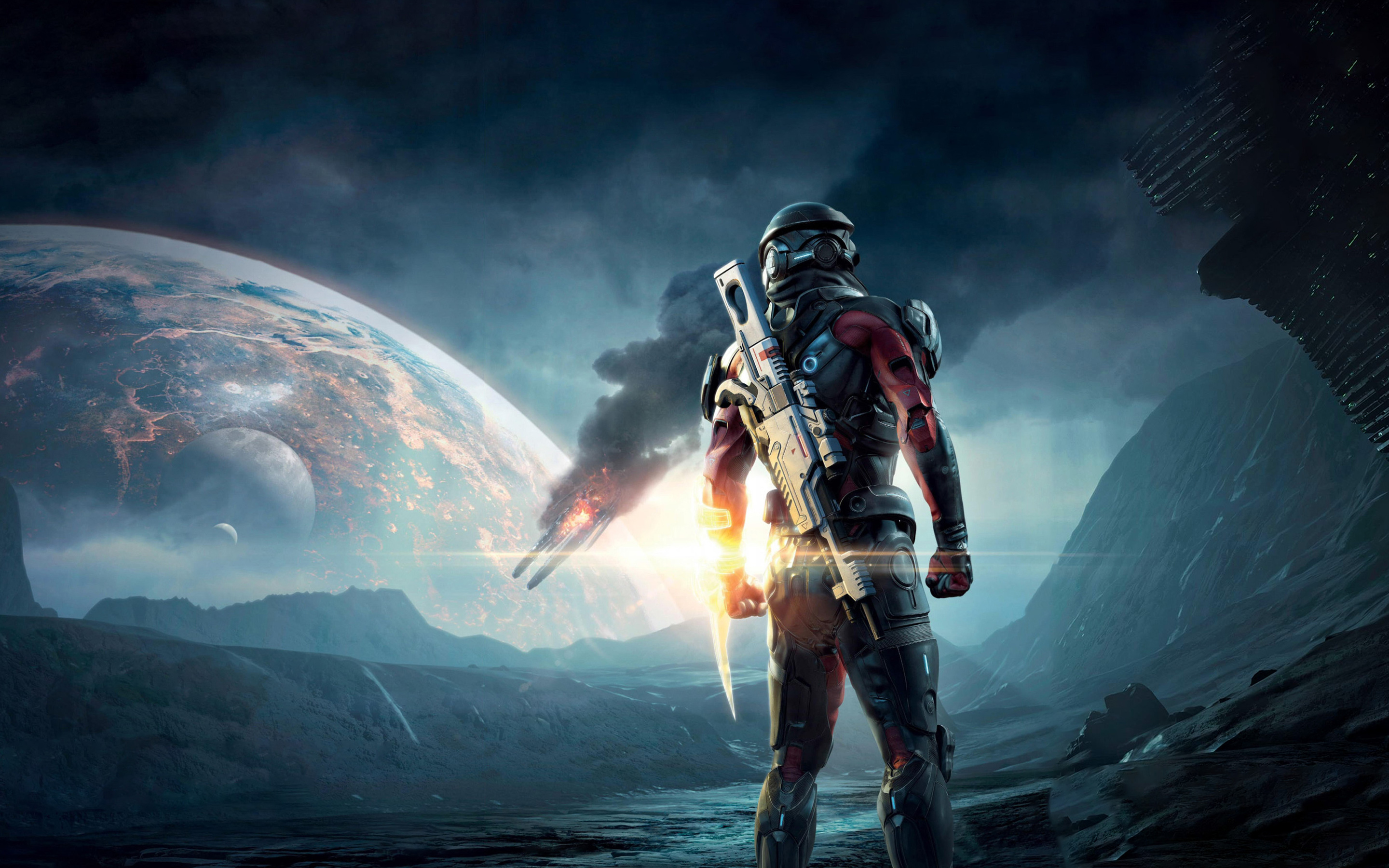
The Mass Effect Andromeda review embargo lifts on Monday, March 20 at 12am PT/3am ET. Keep your peepers peeled on PSLS, then, when Keri Honea will be delivering her verdict from a galaxy far, far away.
